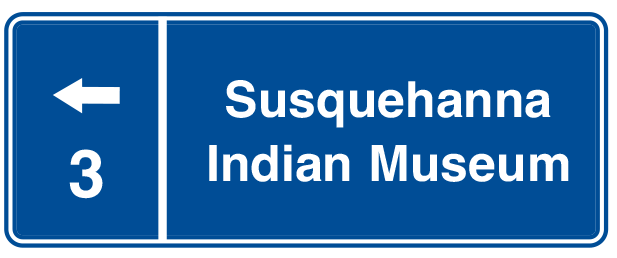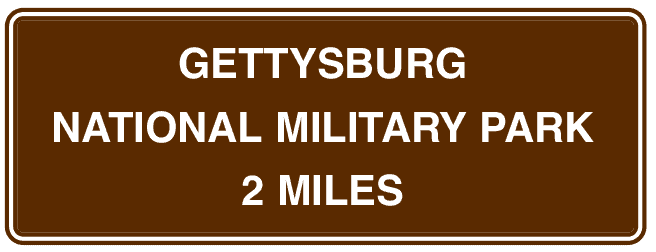Signs
Signs are divided into three basic categories:
Regulatory,
Warning, and
Guide signs. Most signs within each category have a special shape and color.
Regulatory Signs
Regulatory signs tell you what you must do, or must not do, according to the law. The regulations posted on these signs advise you about speed limits, the direction of traffic, turning restrictions, parking restrictions, etc. If you do not obey the messages on regulatory signs, you could be fined and receive points on your driving record because you are breaking the law. You also risk your safety and the safety of others by disobeying the messages on regulatory signs – for example, failing to stop at a stop sign, passing another car where it is not safe to pass, driving faster than the posted speed limit, or driving the wrong way on a one-way street.
Usually, regulatory signs are black and white vertical rectangles or squares, like
SPEED LIMIT signs. Some regulatory signs are black, white, and red, like the
NO LEFT TURN sign with a circle and slash. Other regulatory signs are red and white, like STOP, YIELD, DO NOT ENTER and
WRONG WAY signs.
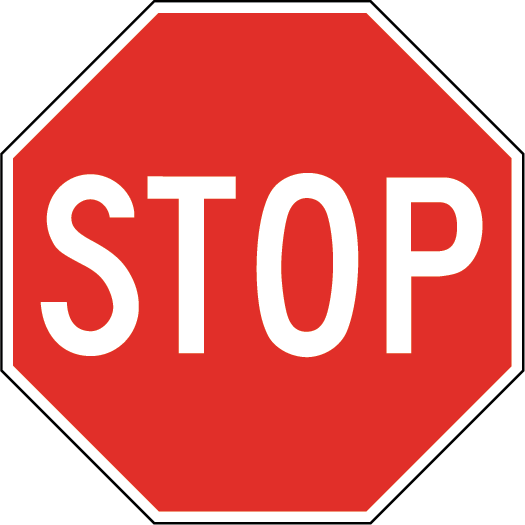
The
STOP sign is the only octagon-shaped (8-sided) sign you see on the highway. At an intersection with a
STOP sign, you must stop completely, check for pedestrians and cross traffic to clear the intersection before you go again. Slowing down without coming to a full stop is illegal.
When you see a crosswalk or a stop line (white top bar), stop before the front of your vehicle reaches the first painted line. If you cannot see traffic, yield to any pedestrians and then carefully pull forward past the line until you can see clearly. Check for traffic and pedestrians and then go ahead when the intersection is clear.
This sign is also used in conjunction with stop signs. This sign allows motorists to make the right turn without stopping.
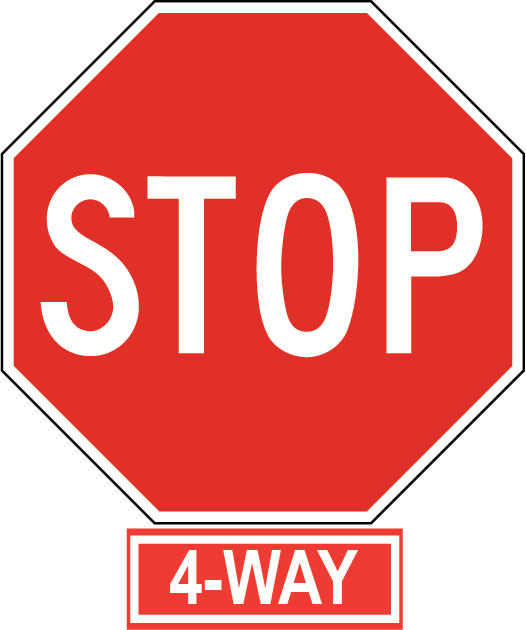
A
FOUR-WAY STOP sign means there are four stop signs at this intersection. Traffic from all four directions must stop. The first vehicle to reach the intersection should move forward first. If two vehicles reach the intersection at the same time, the driver on the left yields to the driver on the right. If facing one another both can proceed with caution, watching for possible turns.
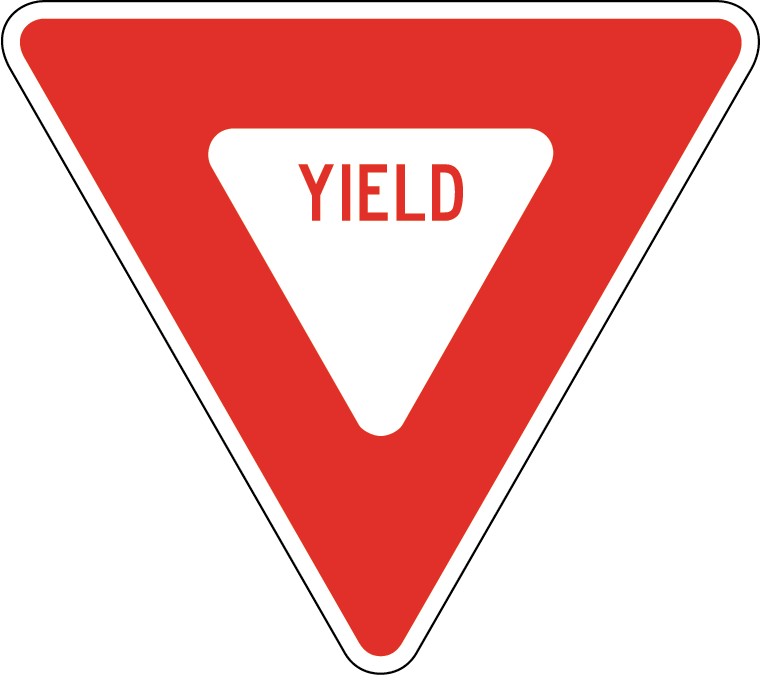
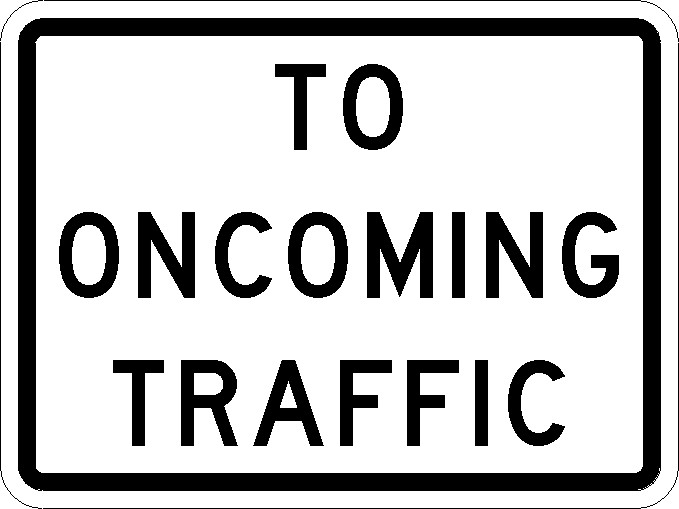
YIELD signs are triangular (3-sided) in shape. When you see this sign, you must slow down and check for traffic and give the right-of-way to pedestrians and approaching cross traffic. You stop only when it is necessary. Proceed when you can do so safely without interfering with normal traffic flow. Remember, you must have a sufficient gap in traffic before you can continue on at either
STOP or
YIELD sign locations.
This sign is used in conjunction with a yield sign at a one-lane bridge or underpass location to alert motorists the one-lane roadway requires them to yield the right-of-way to opposing traffic.
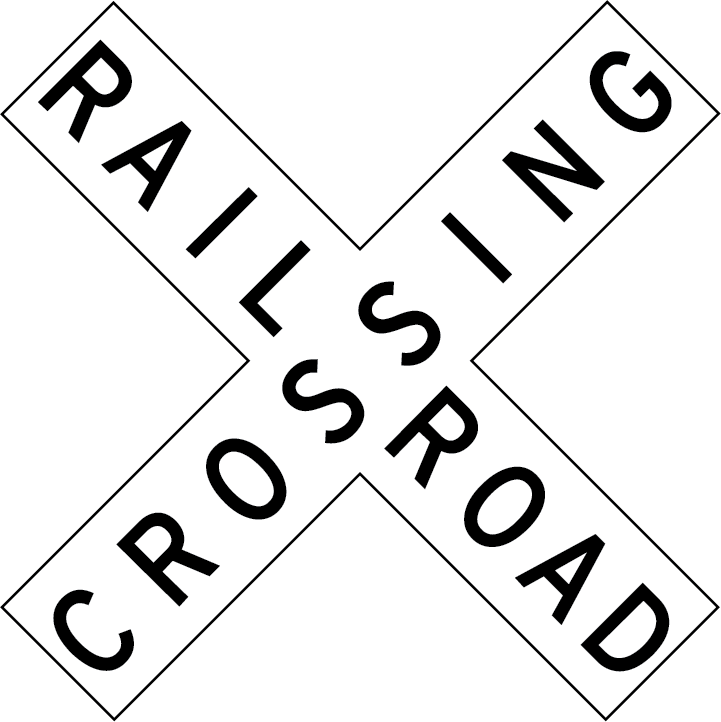
RAILROAD CROSSBUCK SIGN This sign is placed at a railroad crossing where the tracks cross the roadway. You should treat the crossbuck sign as a YIELD sign; slow down and prepare to stop, if you see or hear a train approaching. Refer to
Chapter 3 for more information about railroad crossing safety.
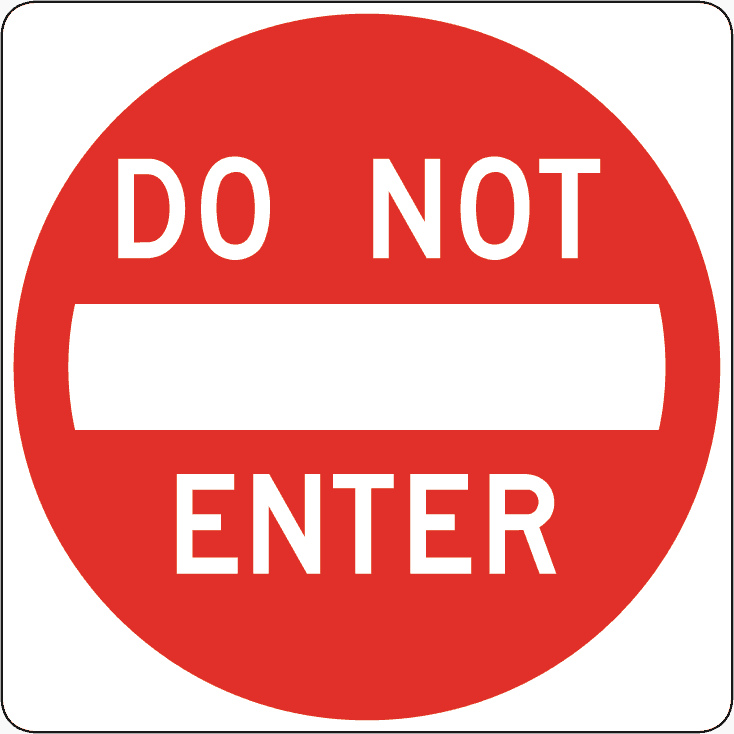
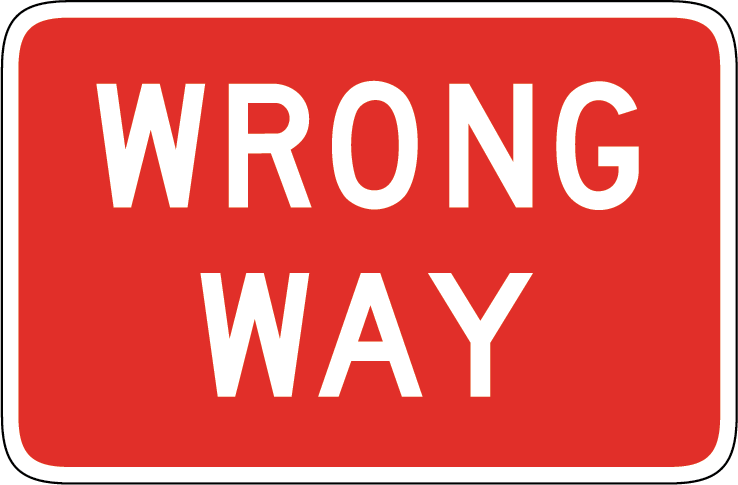
The
DO NOT ENTER and
WRONG WAY signs work as a team. The
DO NOT
ENTER sign is put at the beginning of one-way streets and ramps. When you see this sign, do not drive onto that street or ramp in the direction you are heading.
WRONG WAY signs are placed farther down the one-way street or ramp. They are placed there to catch your attention if you accidentally turn onto the street or ramp.
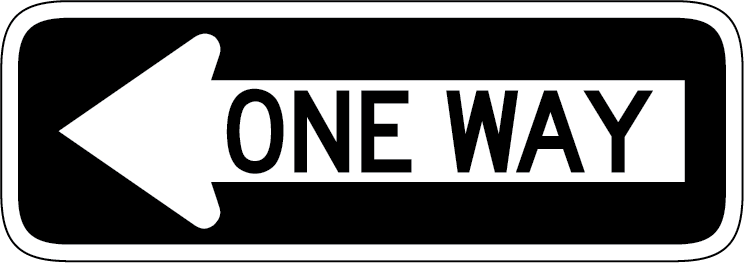
The
ONE-WAY sign means traffic is allowed to move only in the direction the sign is pointing. If you turn onto a one-way street traveling in the opposite direction, you are likely to get into a head-on collision.
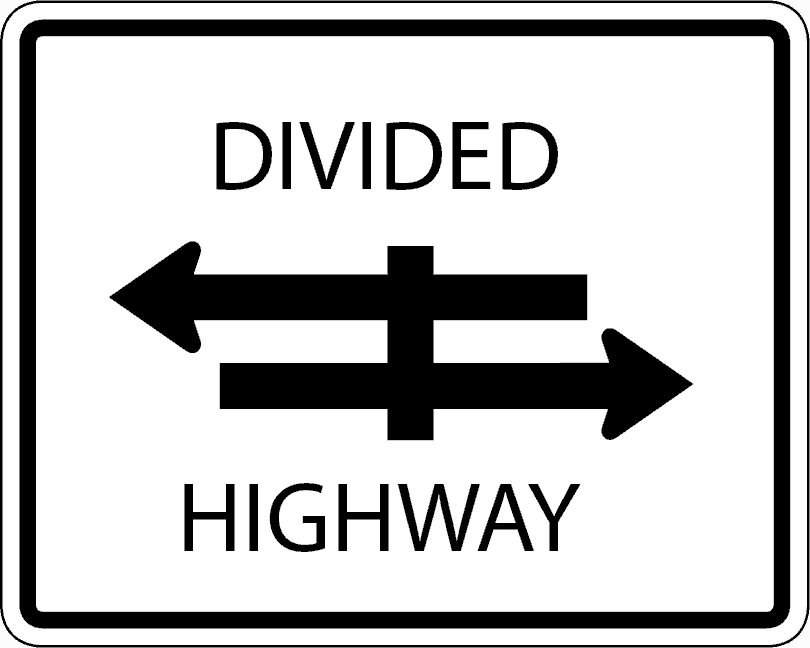
DIVIDED HIGHWAY. This sign means the road you are on intersects with a divided highway. The divided highway is really two, one-way roadways that are separated by a median or a guide rail. At the first roadway, you can only turn right, and at the second roadway, you can only turn left.
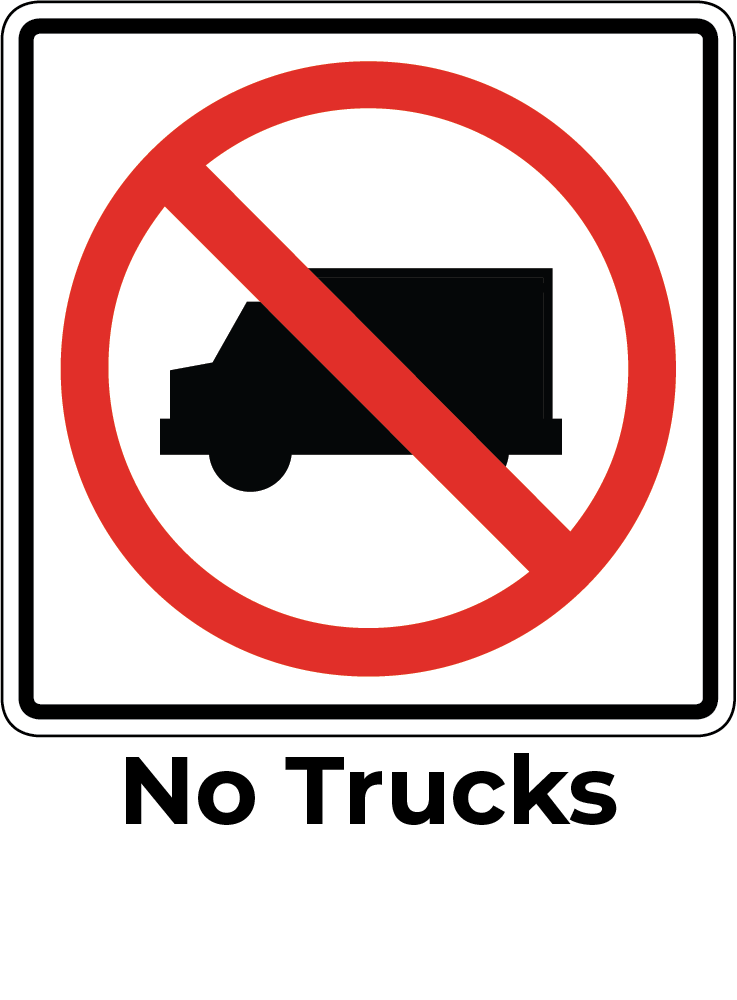
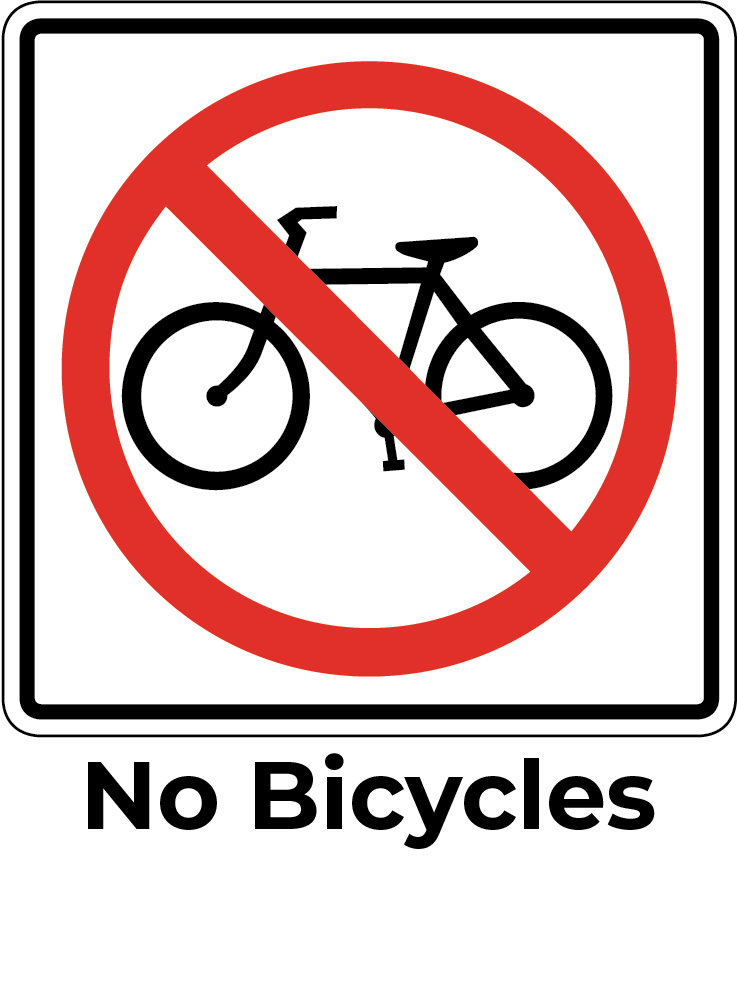
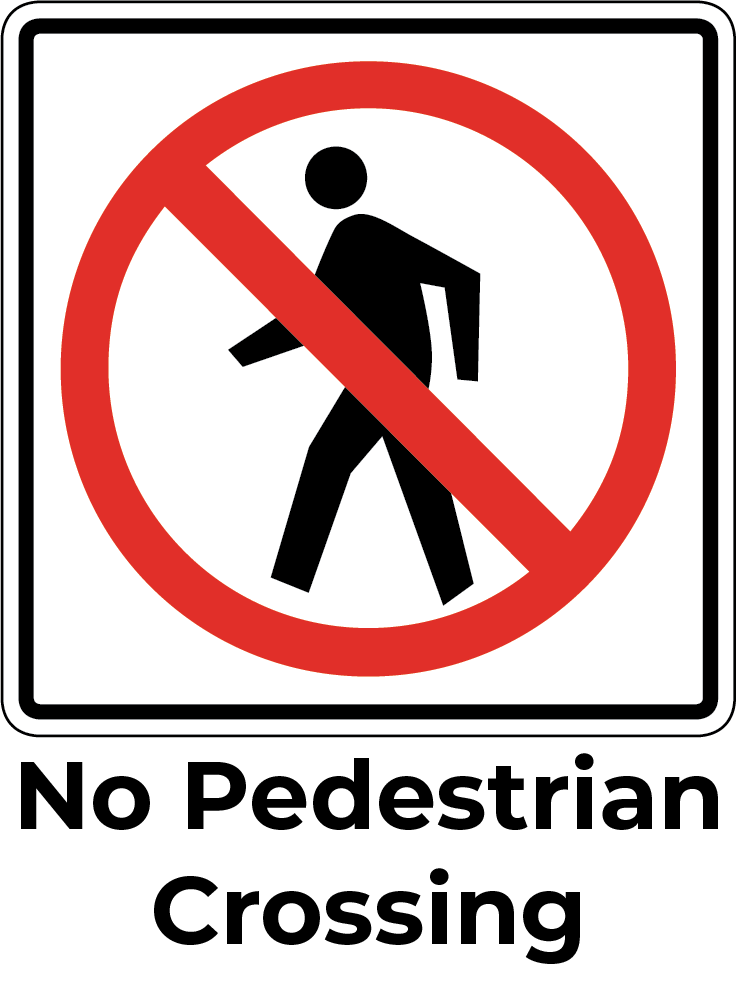
NO TRUCKS, NO BICYCLES, and
NO PEDESTRIAN CROSSING. Operators of trucks, bicycles, and pedestrians may not use roadways where these signs are posted.
The following signs are located where certain actions are prohibited at any or all times:
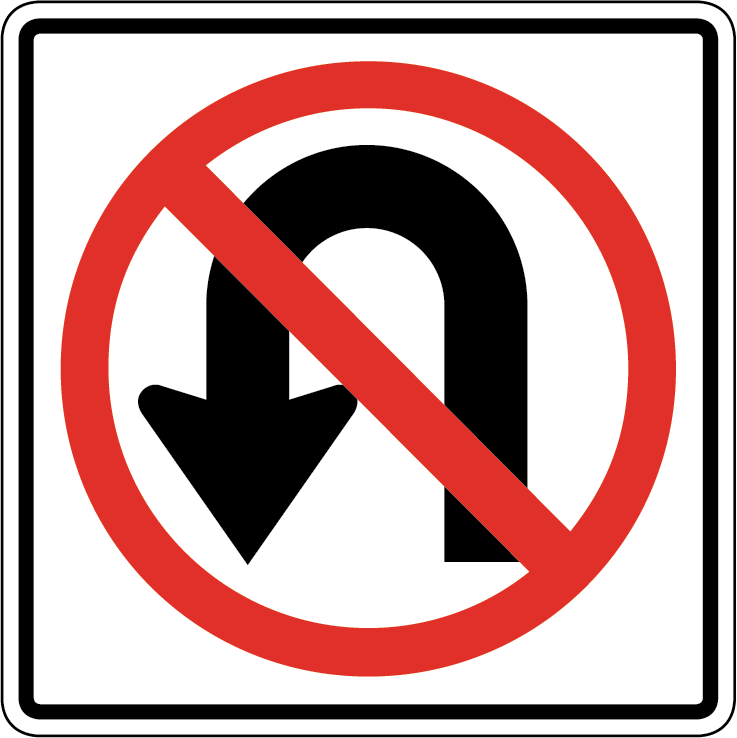
NO U-TURN. This sign prohibits U-turns. Do not make a complete turn to go in the opposite direction.
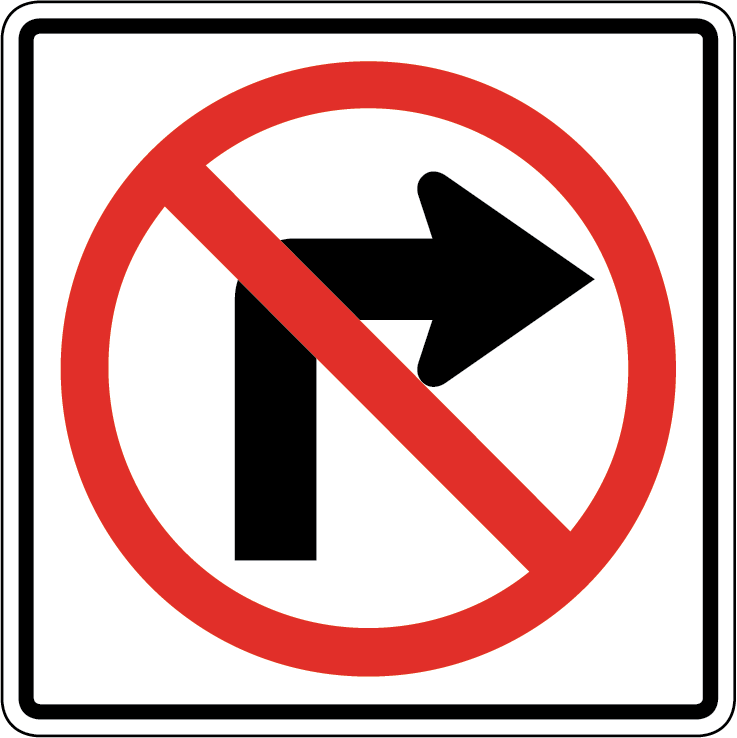
NO RIGHT TURN. This sign indicates right turns are prohibited. Do not make a right turn at this intersection.
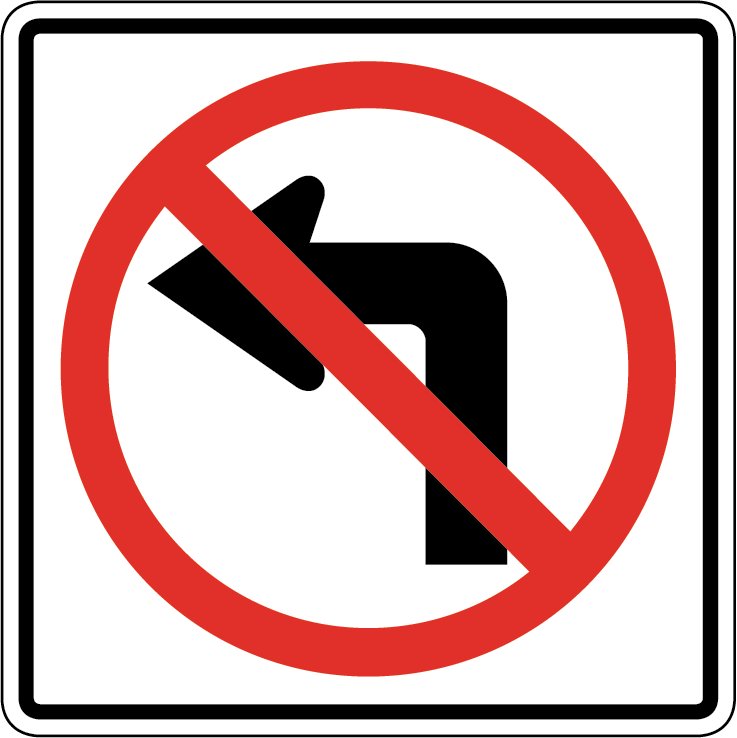
NO LEFT TURN. This sign indicates left turns are prohibited. Do not make a left turn at this intersection.
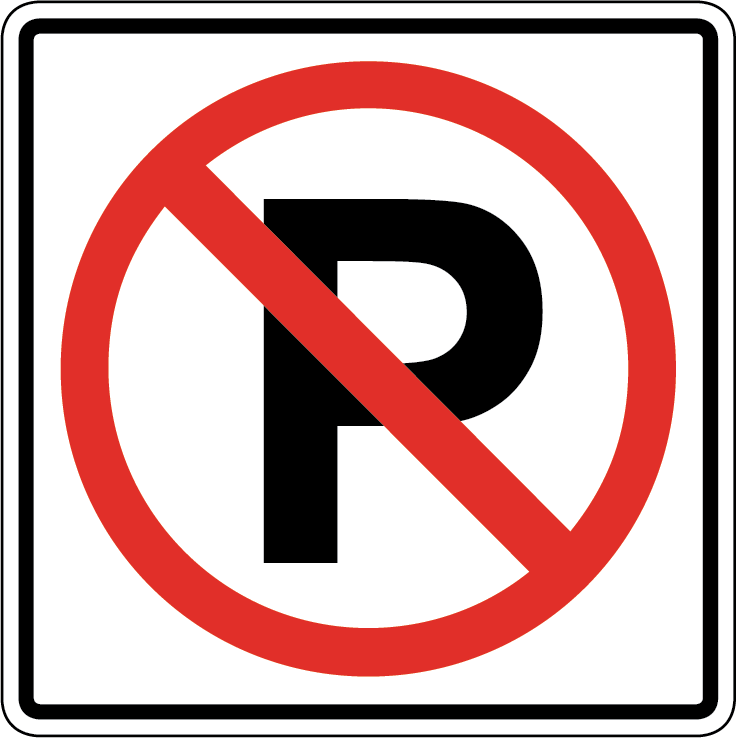
NO PARKING. You may not park a vehicle at locations where this sign is posted.
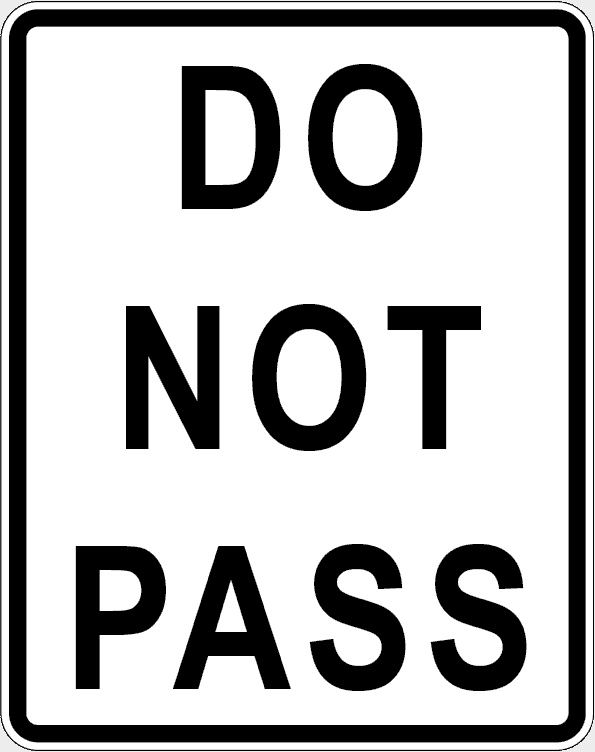
DO NOT PASS. This sign may be placed in areas where you may not pass any vehicles going in the same direction. It is often accompanied by the yellow pennant-shaped sign that says
NO PASSING ZONE (Refer to "Warning Signs").
Lane Use Control Signs
The following
LANE USE CONTROL SIGNS (Directional) are placed at or near intersections above the traffic lane they control to show what maneuver(s) are permitted from that lane.
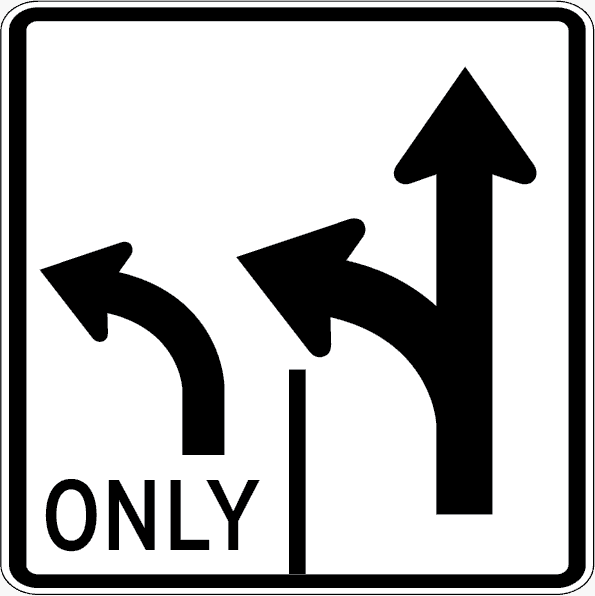
This sign indicates that at the intersection ahead traffic in the left lane must turn left and traffic in the adjoining lane may turn left or continue straight.
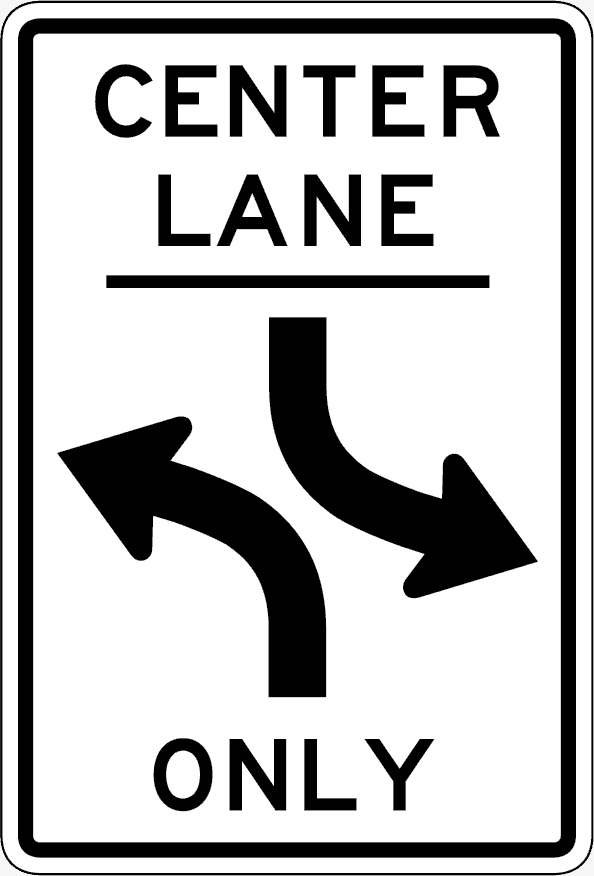
CENTER LANE LEFT TURN ONLY. This sign indicates where a lane is reserved for the exclusive use of left-turning vehicles in either direction and is not to be used for through traffic or passing.

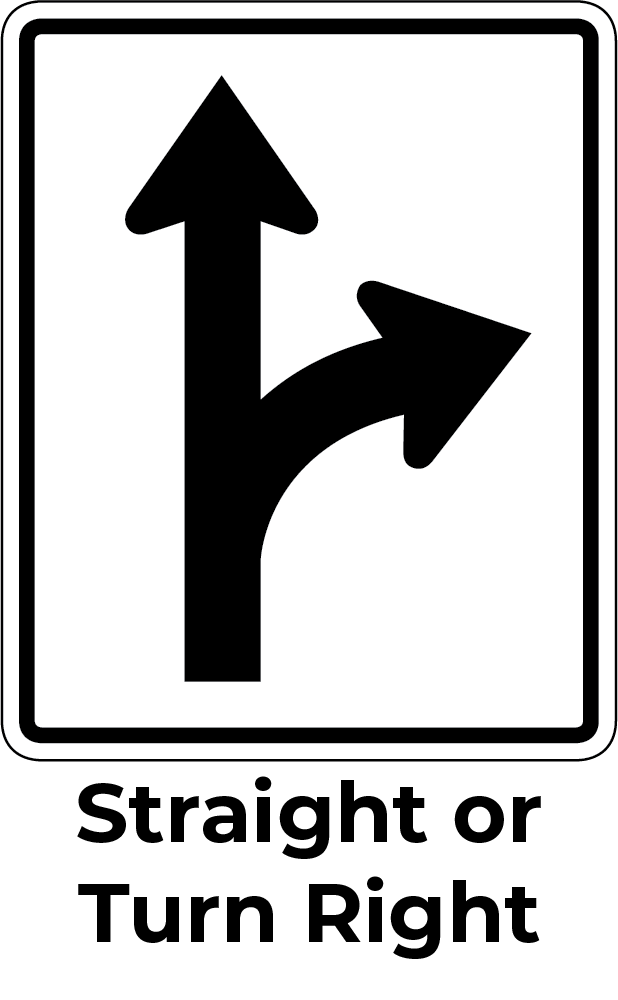
If you are in a lane controlled by signs like these, you may travel in either direction the arrows point.
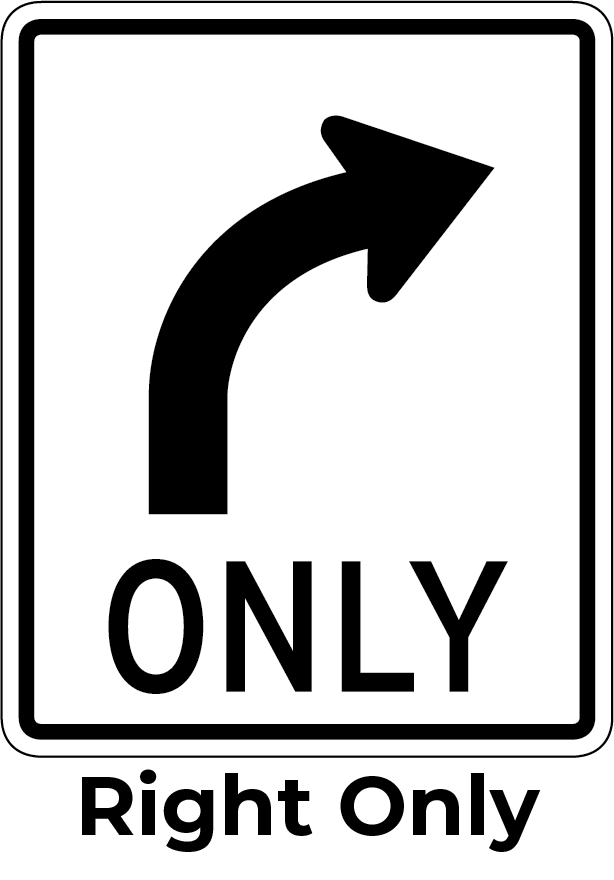

If you are in a lane controlled by a sign with a turn arrow and the word "ONLY," when you reach the intersection, you must make the turn. You may travel only in the direction the arrow points, even if you are in the turn-only lane in error.
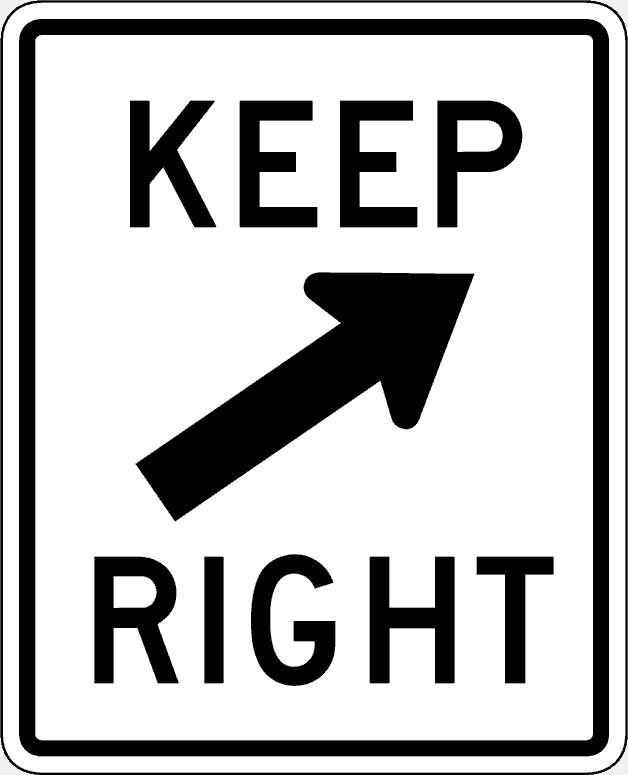
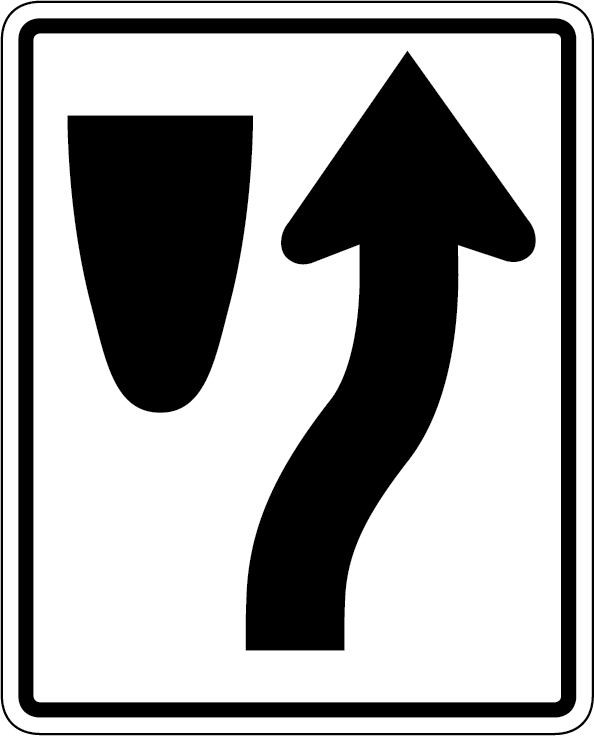
KEEP RIGHT. These signs direct drivers to keep to the right of the traffic island or divider.
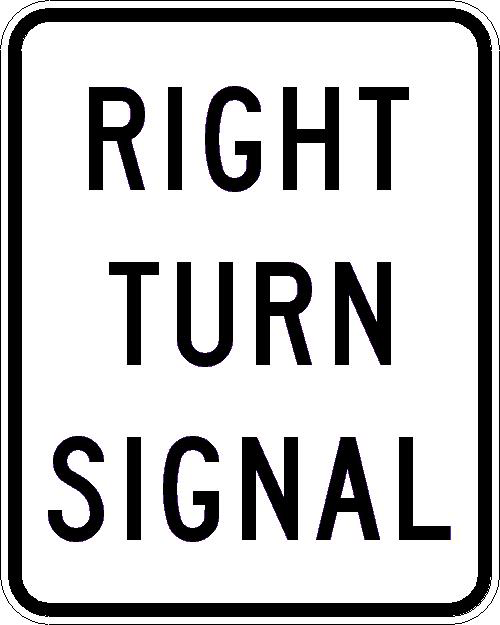
RIGHT TURN SIGNAL. This sign is posted close to a traffic signal to indicate that the signal controls right-turn movements.
Teen Crash Fact
"Driving too fast for conditions" is the No. 1 reason 16- and 17-year-old drivers are involved in crashes.

A
SPEED LIMIT sign indicates the maximum legal speed under ideal conditions for the stretch of highway where it is posted. Your safety may depend upon driving slower than the posted speed under poor conditions.
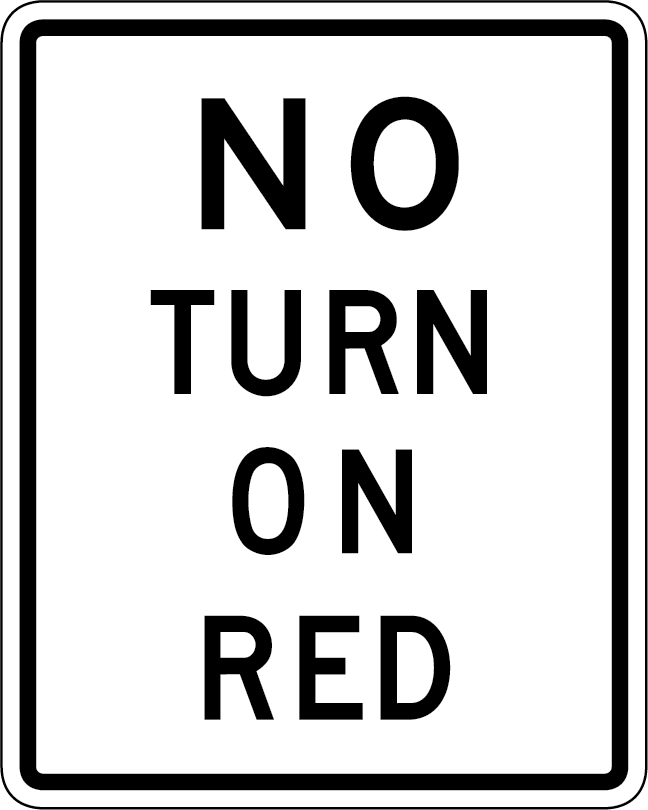
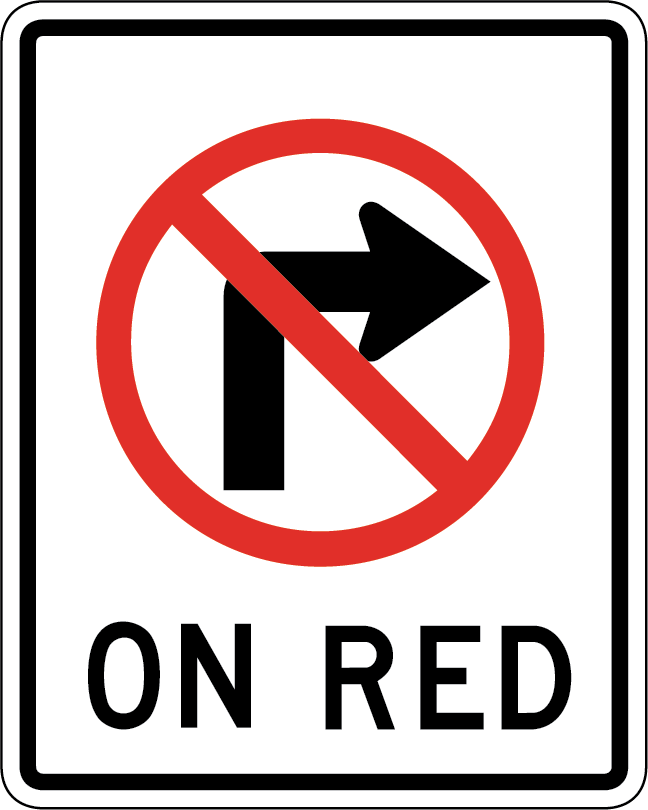

You may not turn during the red light cycle at an intersection where one of these signs is posted. You must wait for the signal to turn green.
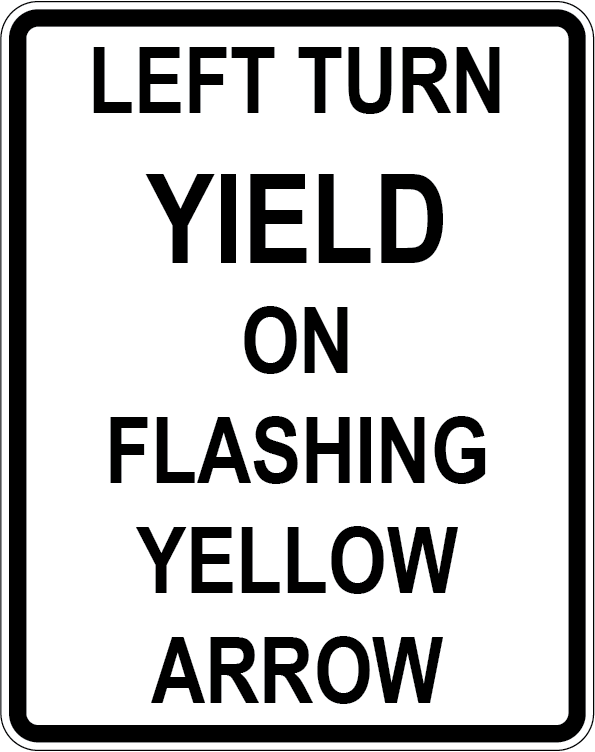
LEFT TURN YIELD ON FLASHING YELLOW ARROW. This sign indicates a left turn is permitted when the yellow arrow is flashing, but you must yield to oncoming traffic. This sign is commonly placed at intersections, near the left-turn traffic signal, to inform drivers left turns are not protected when the flashing yellow arrow is operating.

LEFT TURN YIELD ON GREEN. This sign indicates a left turn is permitted, but you must yield to oncoming traffic. It is commonly placed at intersections, near the left-turn traffic signal, to remind drivers left turns are not protected when the circular green signal comes on.

OPPOSING TRAFFIC HAS EXTENDED GREEN. This sign is posted where opposing traffic may continue to move after your signal has turned red.
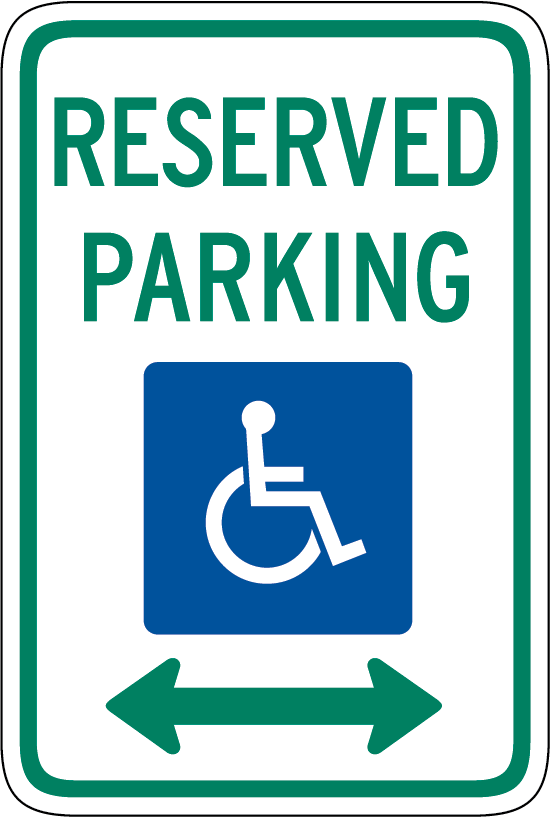
RESERVED PARKING. Although this sign is not black and white, it is a regulatory sign. It marks areas where parking is reserved for disabled persons or severely disabled veterans. Vehicles parked in these spaces must display authorized registration plates or parking placards. Unauthorized vehicles parked in these spaces are subject to a fine and towing costs.
Warning Signs
Warning signs tell you about conditions on or near the road ahead. They warn you about possible hazards or changes in roadway conditions. They are posted before the condition, so you have time to see what is ahead, decide how you should respond, and slow down or change your travel path, if necessary. Warning signs are usually diamond-shaped with black symbols or words on a yellow background.
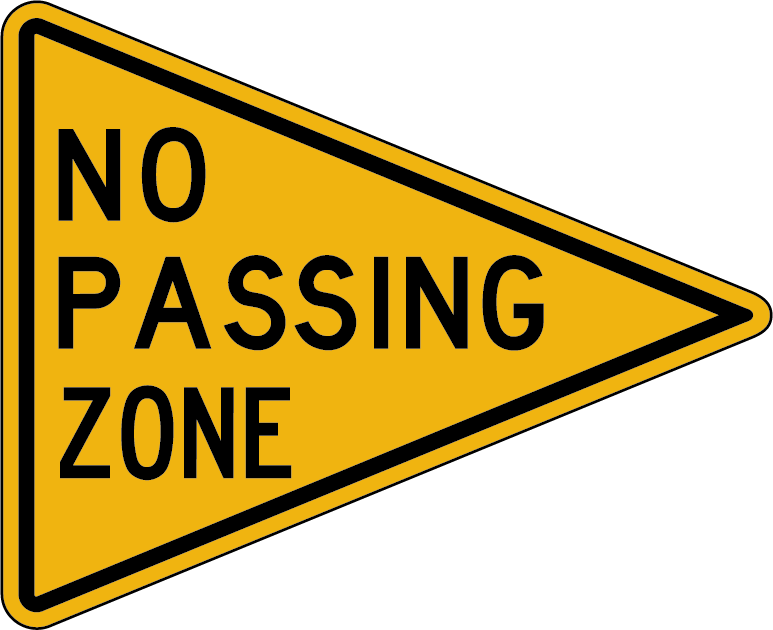
NO PASSING ZONE. This is the only pennant-shaped warning sign. This sign marks the beginning of a no-passing zone and is placed on the left side of the road facing the driver.
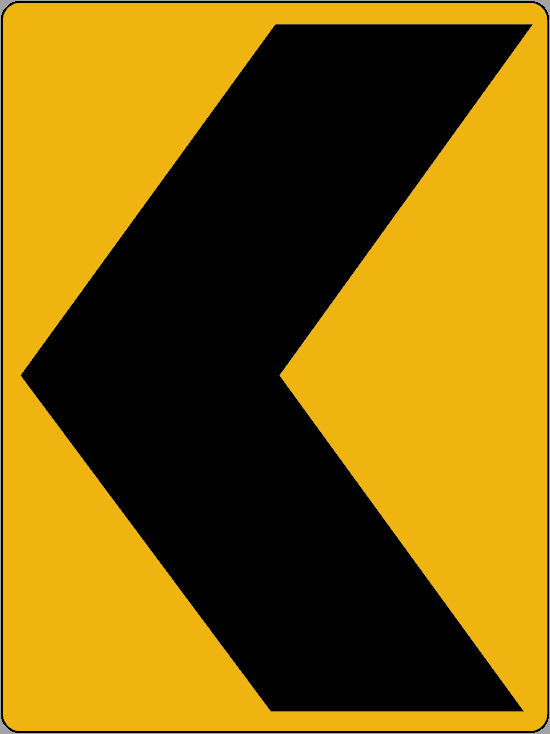
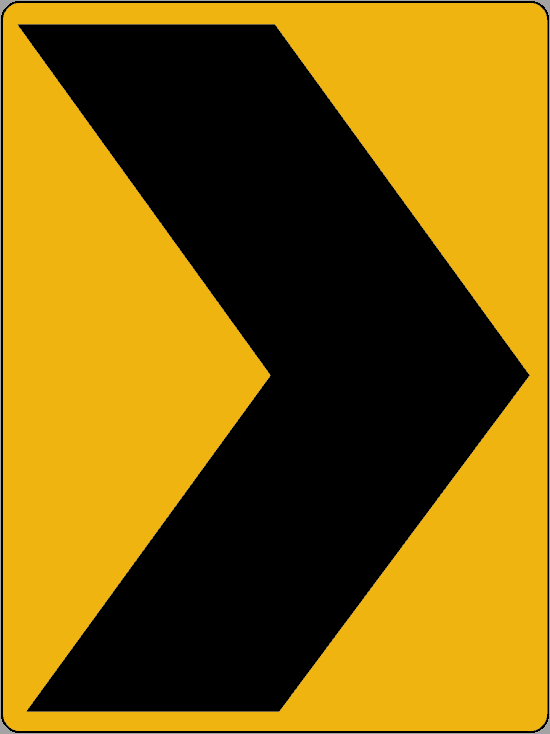
CHEVRON SIGNS. There is a sharp change in the direction of the road, such as a curve to the left or right. The road bends in the direction the chevron points. When used in a curve, there will be an advanced curve warning sign, and there may be several chevron signs placed throughout the curve.
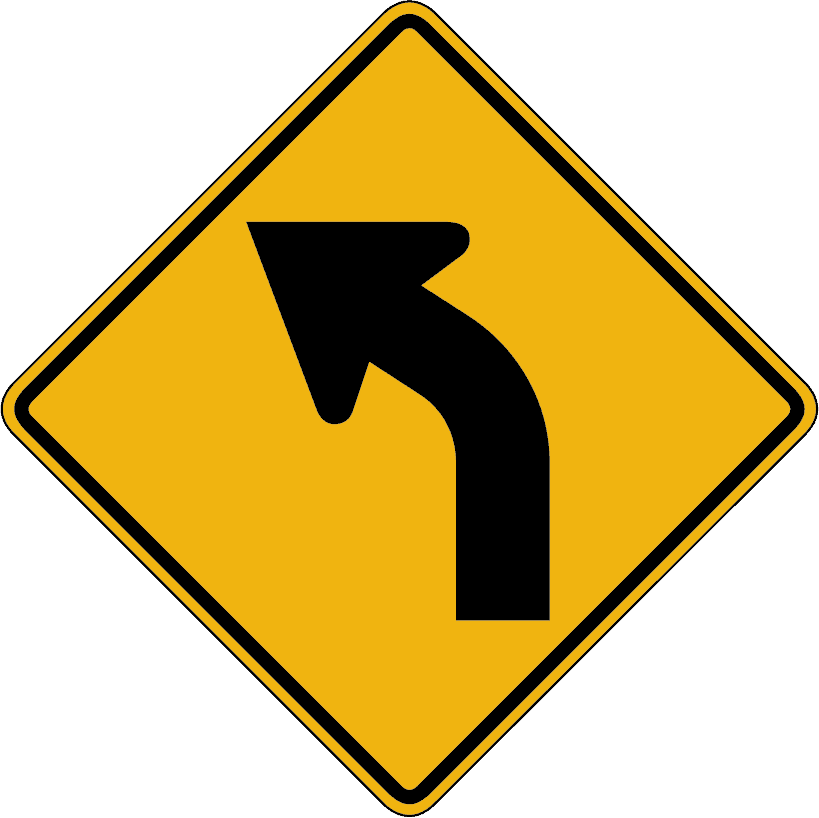
LEFT CURVE. The road curves ahead to the left. You need to slow down, stay in the center of your lane, and prepare to navigate through the left-bending curve.

RIGHT CURVE. The road curves ahead to the right. You need to slow down and position your vehicle slightly to the right of the center of your lane, as you drive through the right-bending curve.
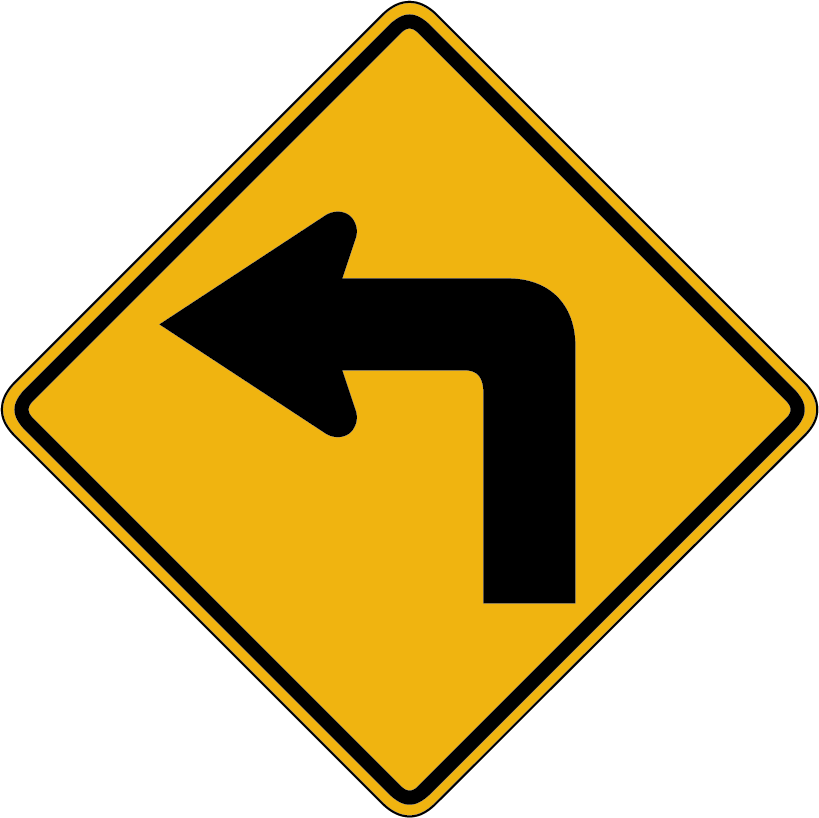
SHARP LEFT TURN. The road ahead turns sharply to the left. You need to slow down substantially, stay in the center of your lane and prepare to navigate through the sharp left turn. Some sharp turn signs have an advisory speed located on the sign or posted below it.
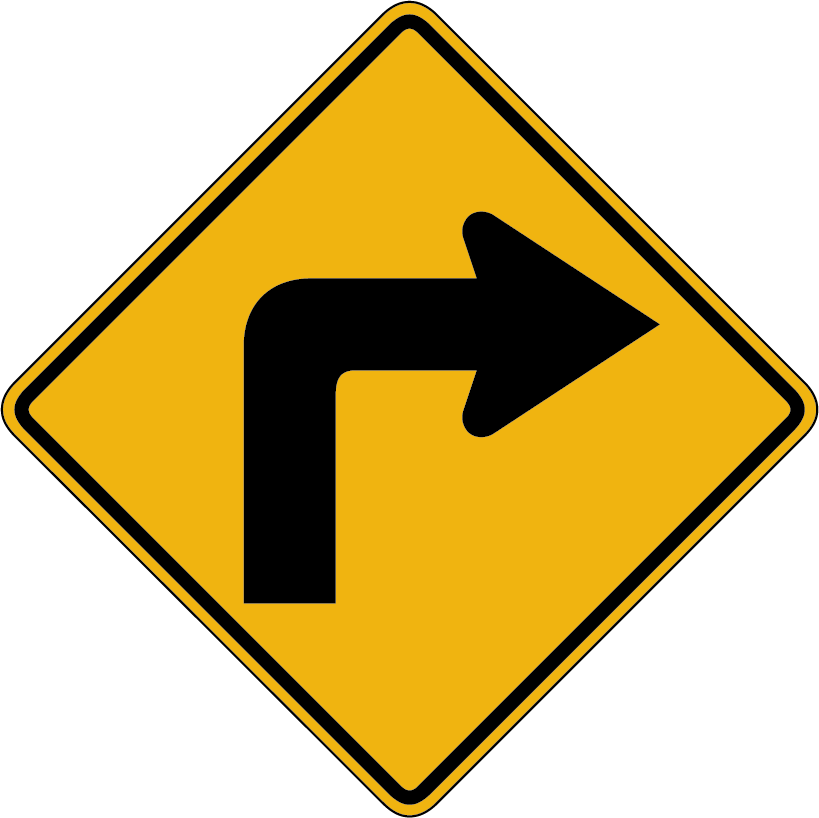
SHARP RIGHT TURN. The road ahead turns sharply to the right. You need to slow down substantially, position your vehicle slightly to the right of the center of your lane and prepare to navigate through the sharp right turn. Some sharp turn signs have an advisory speed located on the sign or posted below it.

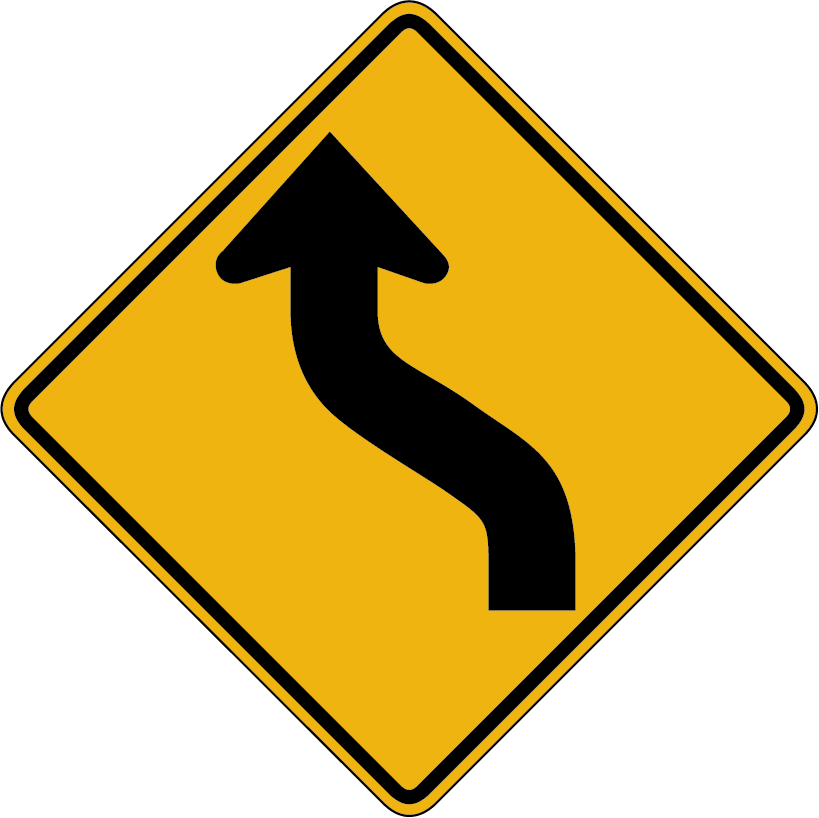
SET OF CURVES. The road ahead curves first in one direction and then back in the other direction (a set of two curves). Slow down and prepare to navigate through the set of curves.

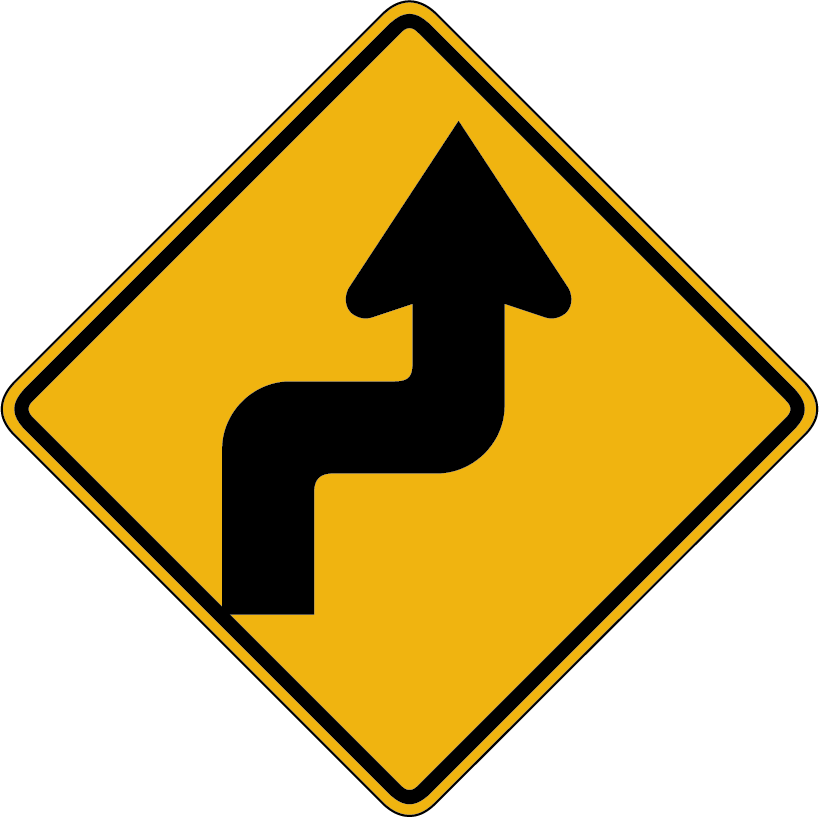
RIGHT AND LEFT SHARP TURNS. The road ahead turns sharply first in one direction and then back in the other direction. Slow down substantially and prepare to navigate through the set of turns.

WINDING ROAD (SERIES OF CURVES). This sign indicates there are three or more curves in a row on the road ahead.
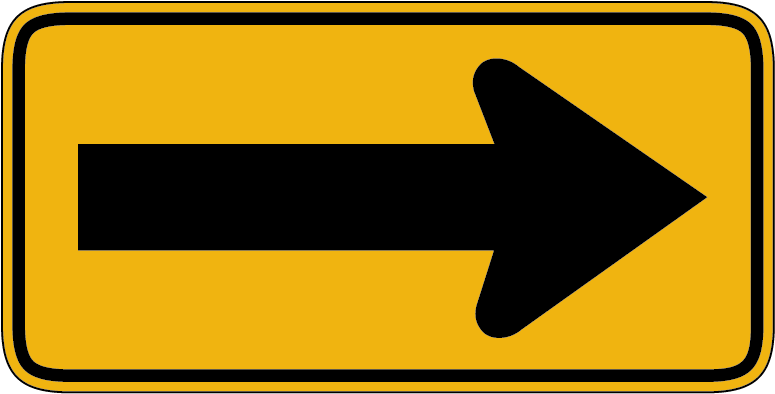
ONE DIRECTION LARGE ARROW. The road ahead changes direction at an extreme angle. Before you reach such an extreme curve, slow down as much as you would to make a turn at an intersection.
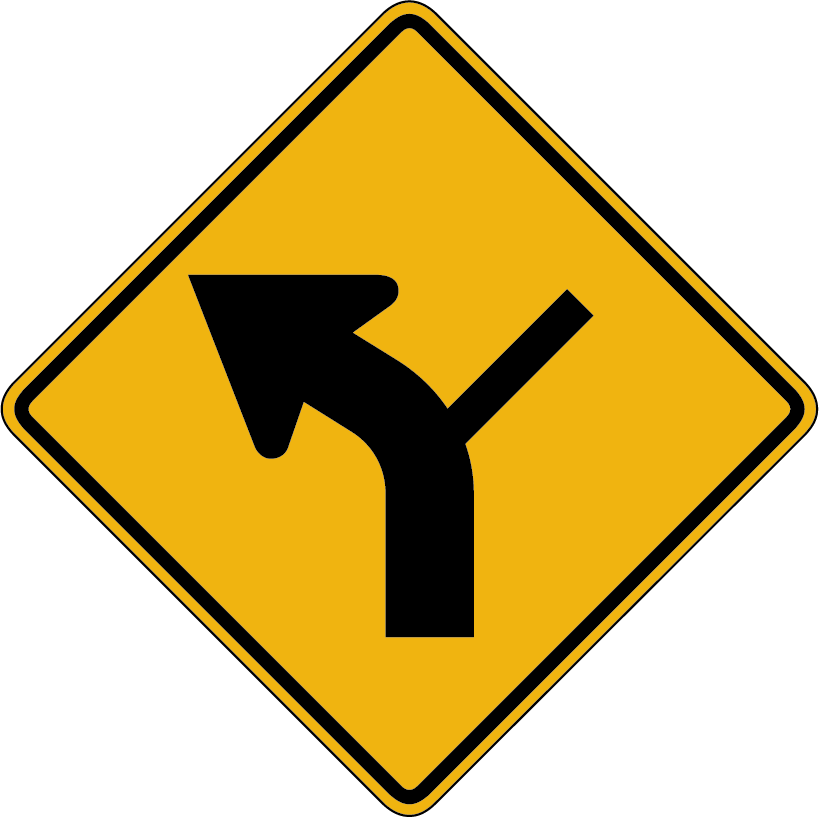
ROAD ENTERING CURVE. The main road curves to the left with a side road entering from the right. Approach the intersection with extra caution. A driver preparing to enter the main road may not be able to see you approaching from around the curve and may pull out in front of you, leaving you little room to avoid a crash, if you are traveling too fast.
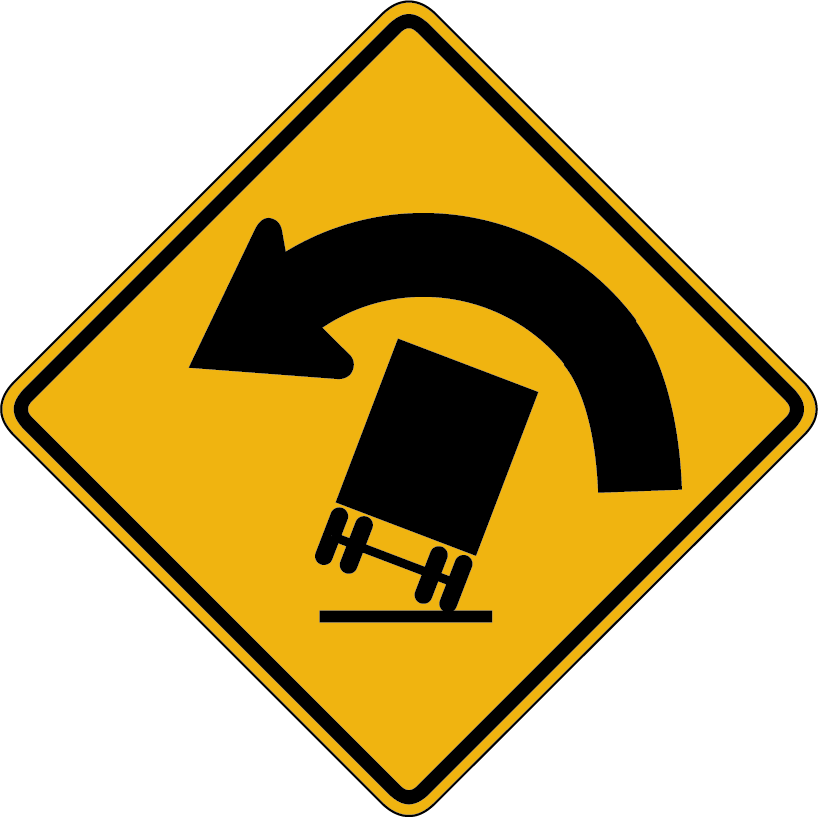
TRUCK ROLLOVER. This sign identifies curves where trucks traveling at excessive speeds have a potential to rollover.
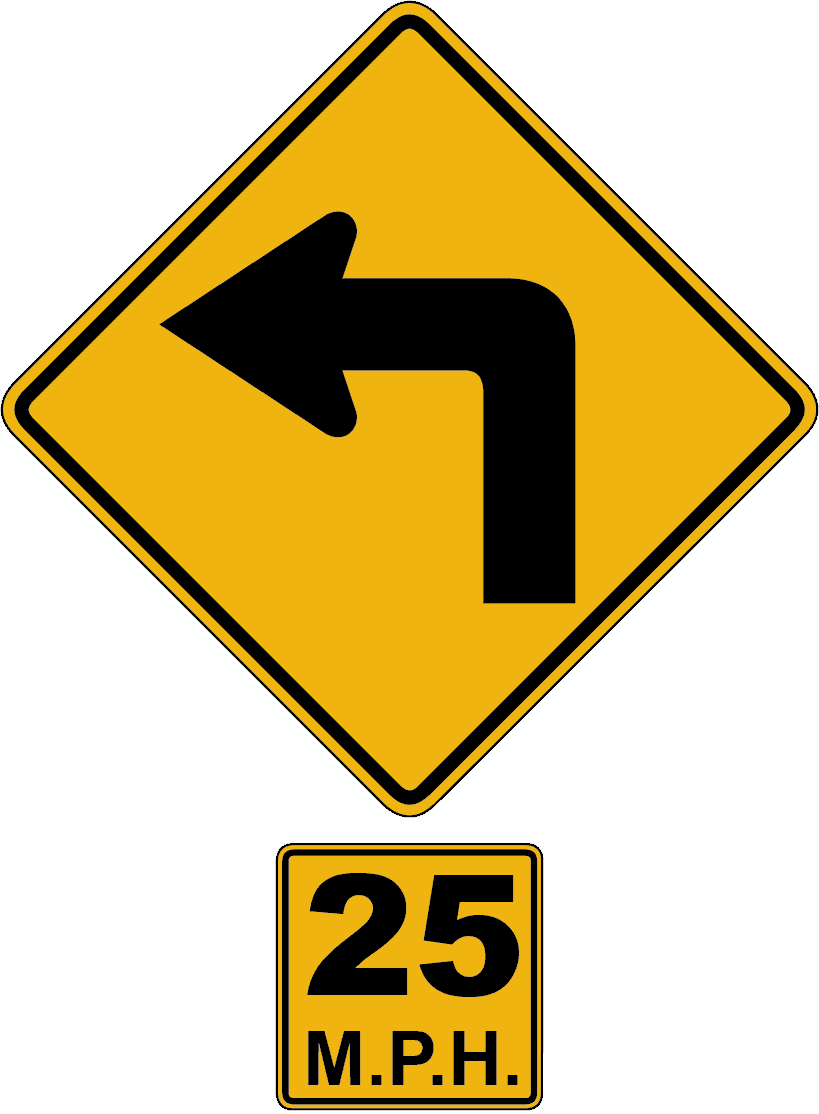
ADVISORY SPEED SIGNS. This sign may be used with any diamond-shaped warning sign. The highest speed you should travel around a sharp left curve ahead is 25 mph.
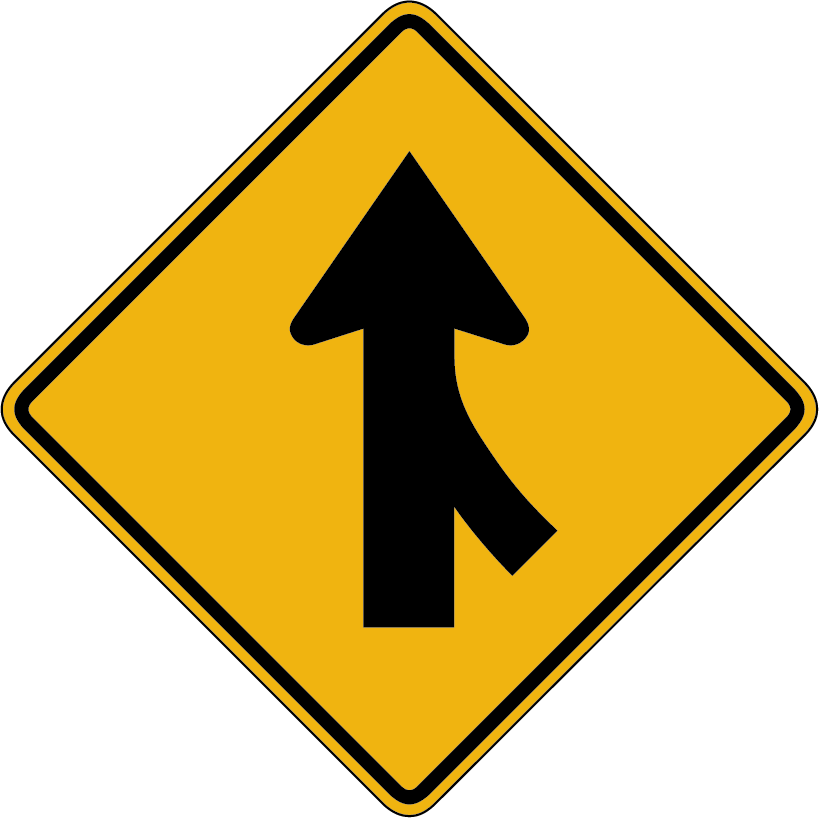
MERGING TRAFFIC. This sign is placed on a major roadway to tell you traffic may be merging into your lane from another roadway or a ramp. In this example, the traffic will be entering your lane from the right. Entering traffic must yield to traffic already on the major roadway.
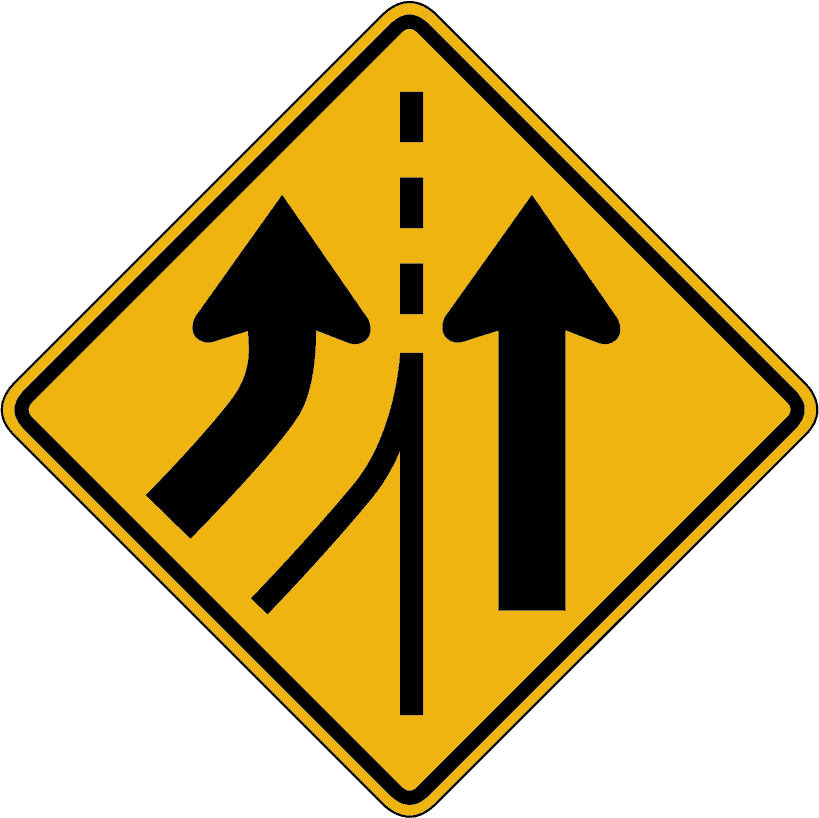
ADDED LANE. This sign is placed in advance of a point where two roadways meet. It means merging is not necessary because the entering traffic uses a new lane that has been added to the roadway.
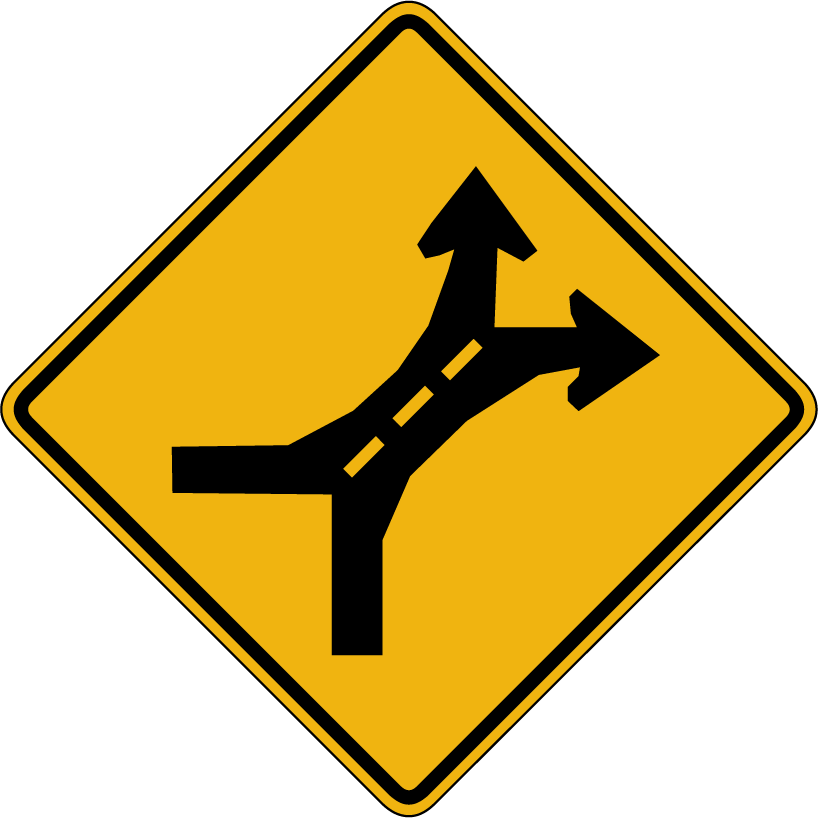
WEAVE AREA. This sign is used to warn that you will be merging with another roadway as some traffic is exiting and crossing your path.
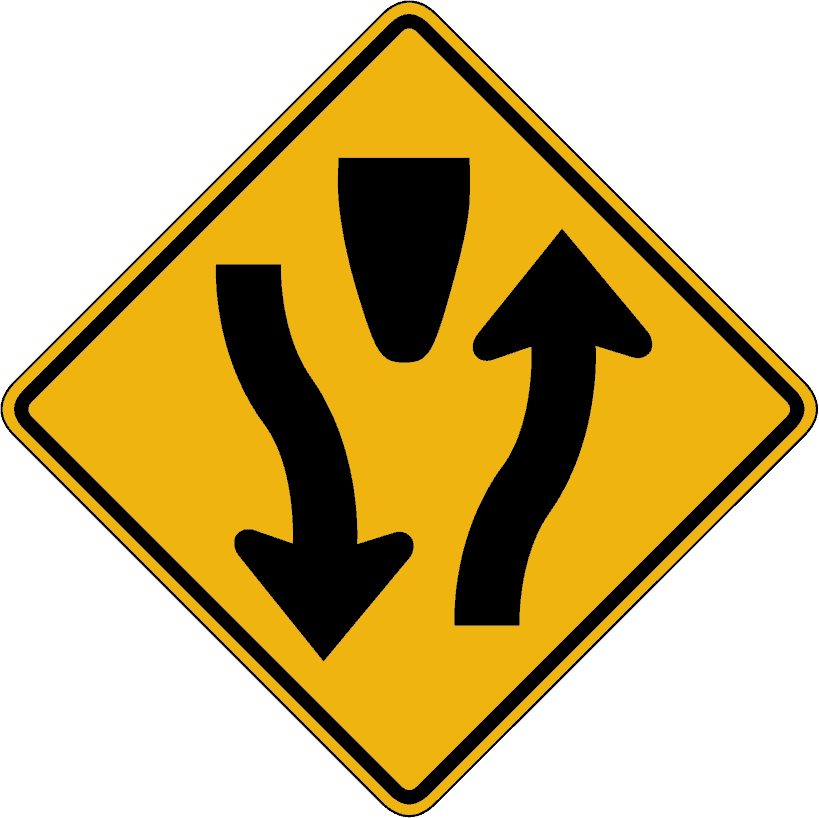
DIVIDED HIGHWAY BEGINS. The highway ahead becomes a divided highway with two one-way roadways and a median or divider separating traffic moving in opposite directions. Keep to the right of the divider or median.
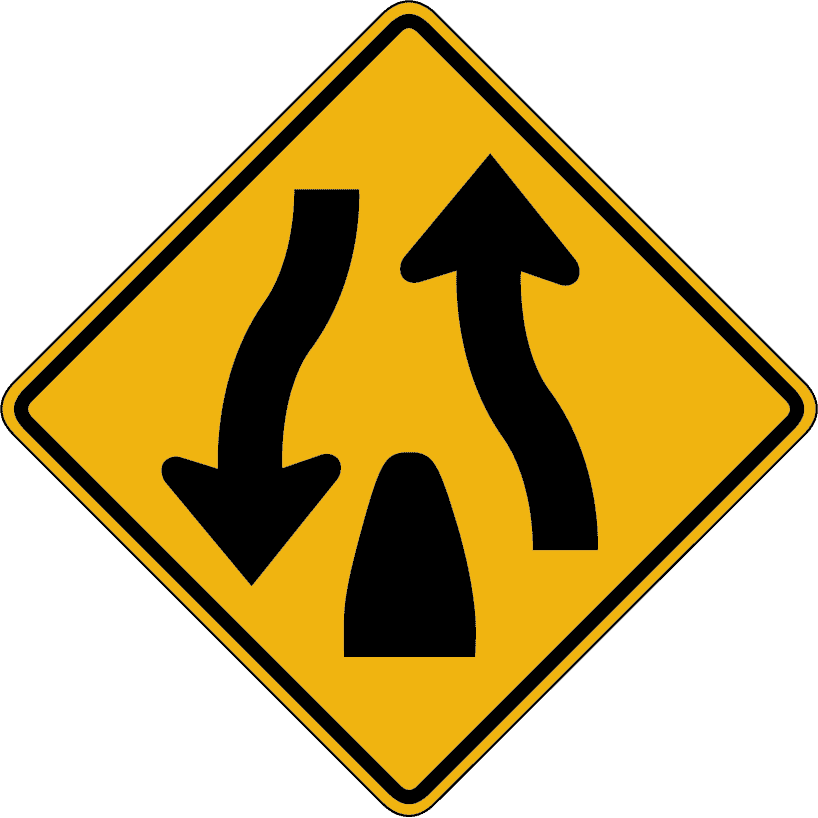
DIVIDED HIGHWAY ENDS. The divided highway on which you are traveling ends ahead. You will then be on a roadway with two-way traffic. Keep to the right of the centerline and watch for oncoming traffic.
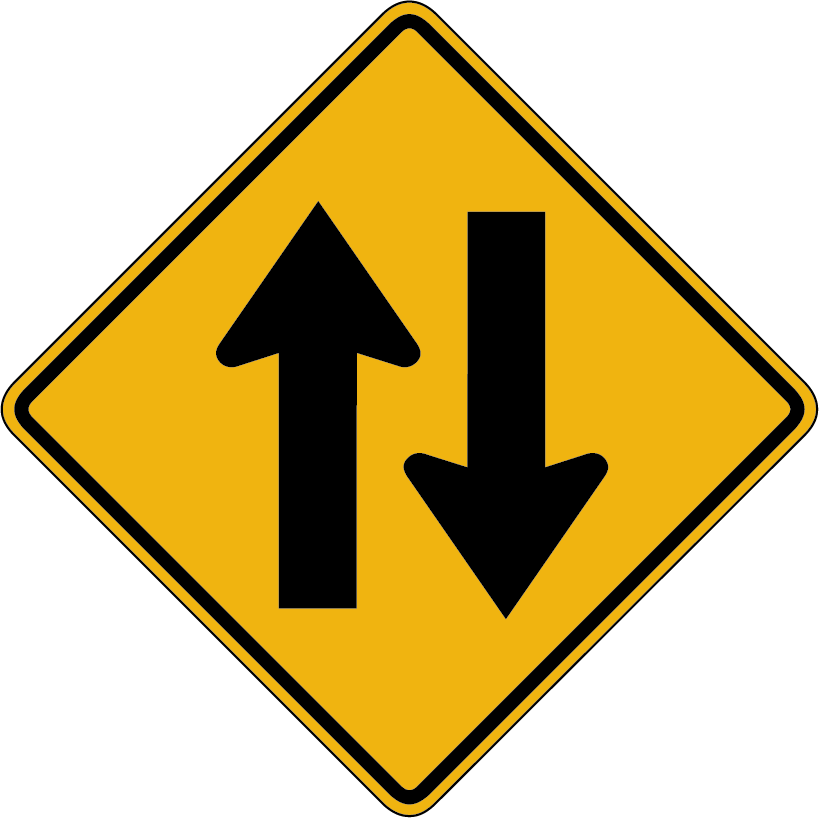
TWO-WAY TRAFFIC AHEAD. The one-way street or roadway ends ahead. You will then be traveling on a road with two lanes of traffic moving in opposite directions. Stay in your lane to the right of the centerline. This sign may also be placed at intervals along the two-way roadway.

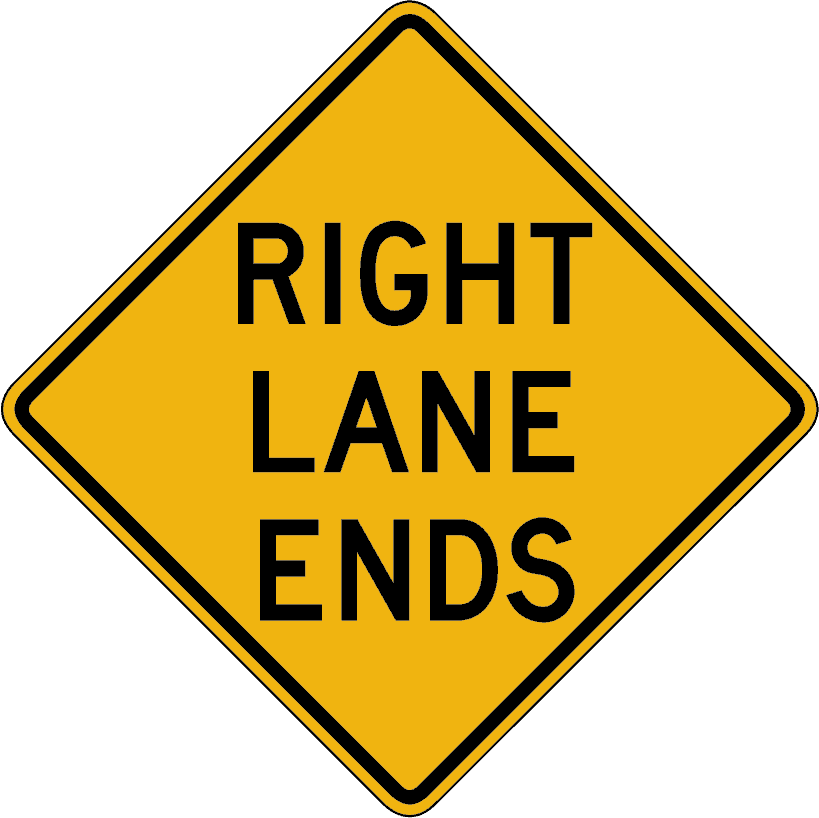

LANE ENDS. These signs tell you one lane on a multi-lane roadway will end ahead. In these examples, the traffic in the right lane must merge left.
INTERSECTION SIGNS. The signs below show types of intersections. By showing you in advance how the roads join each other, the signs let you know when the road you are traveling on does not continue straight through the intersection. The signs also warn you about possible problems with the movements of other vehicles. Approach all of these intersection types with extra caution by searching ahead and preparing to slow down, if necessary.
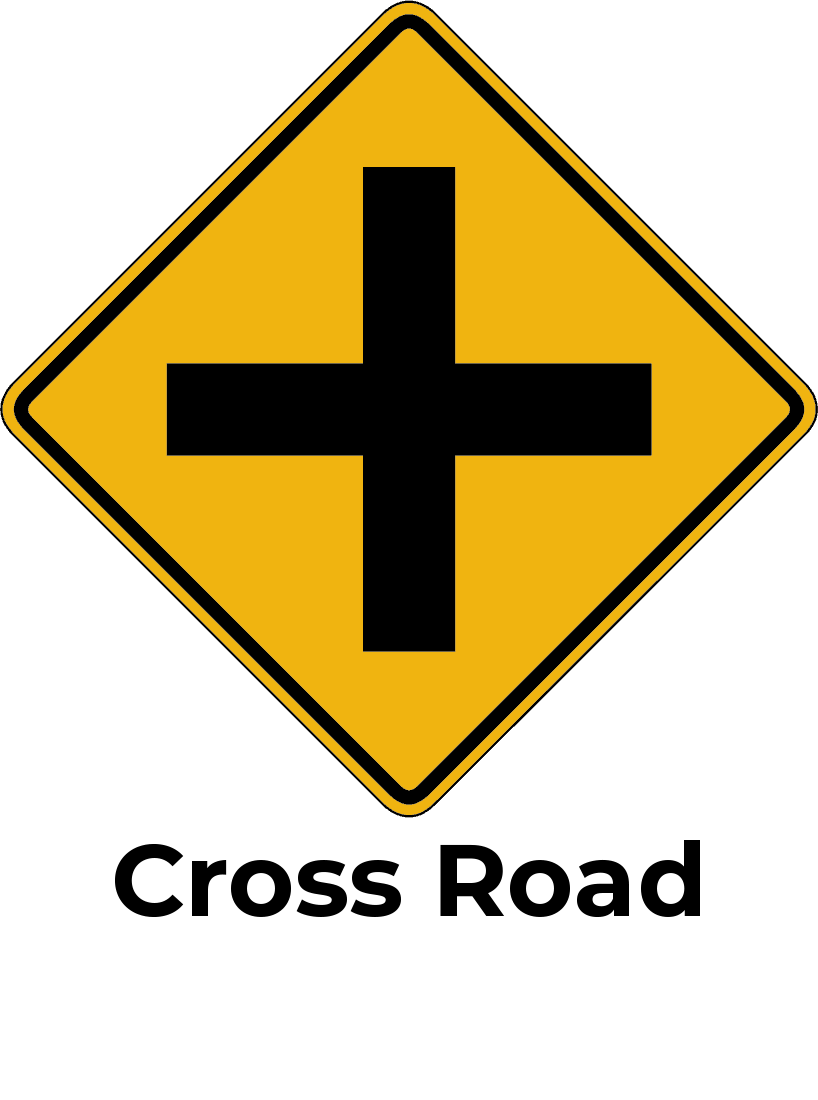
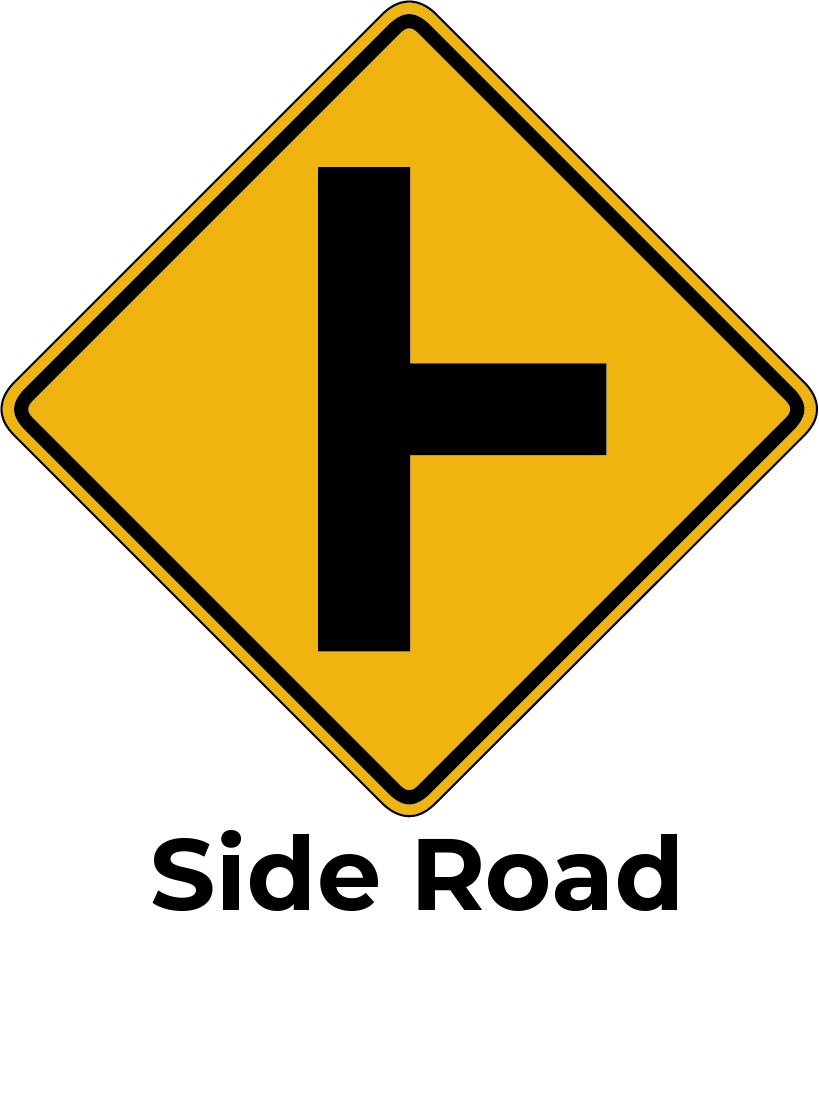
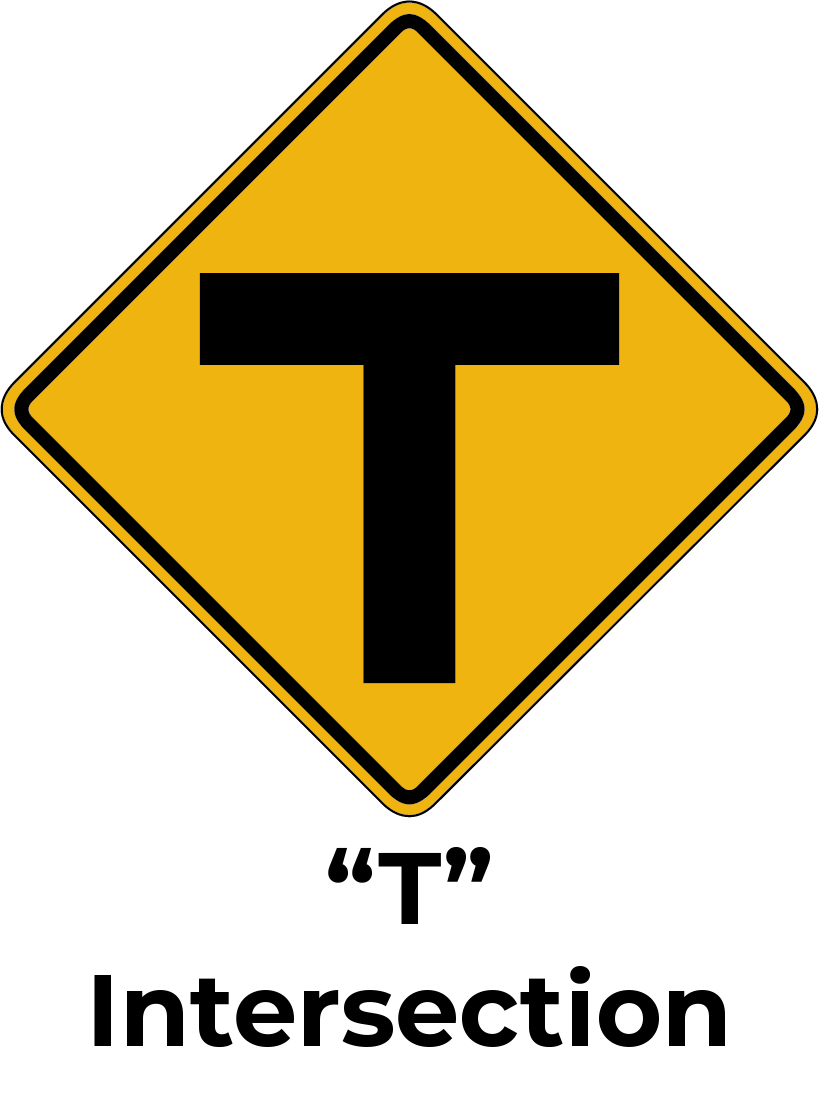
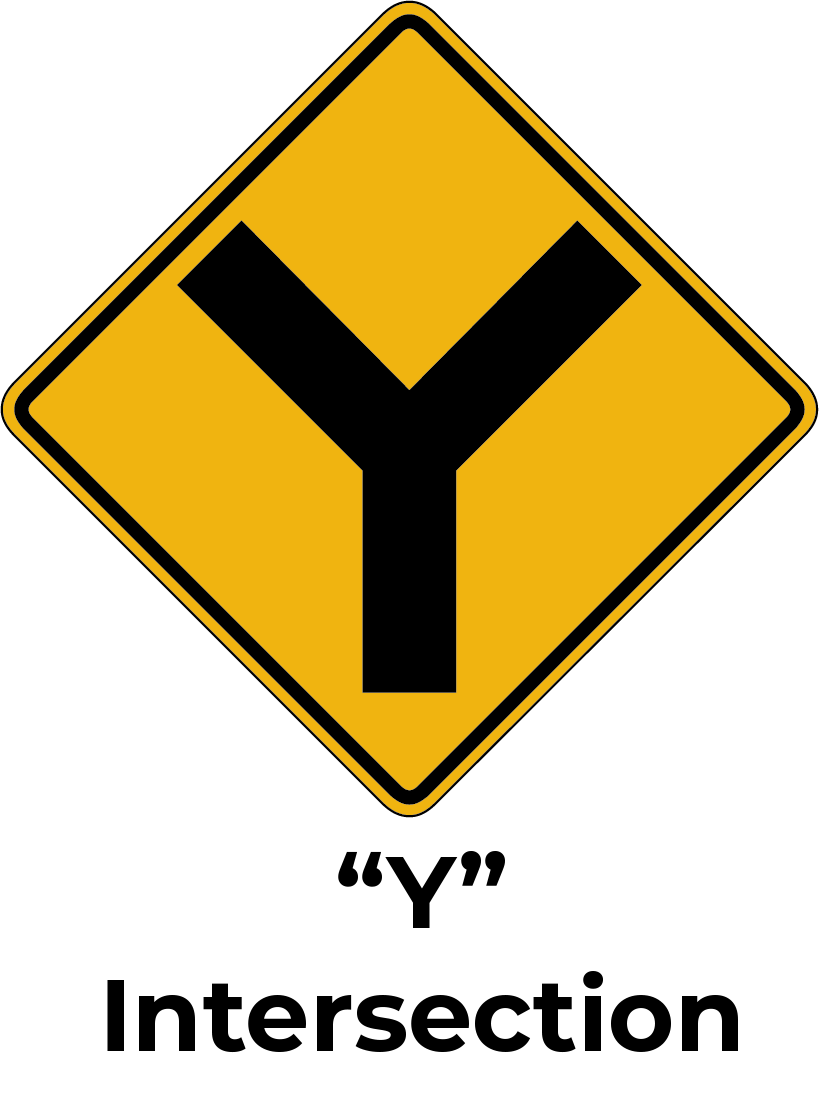
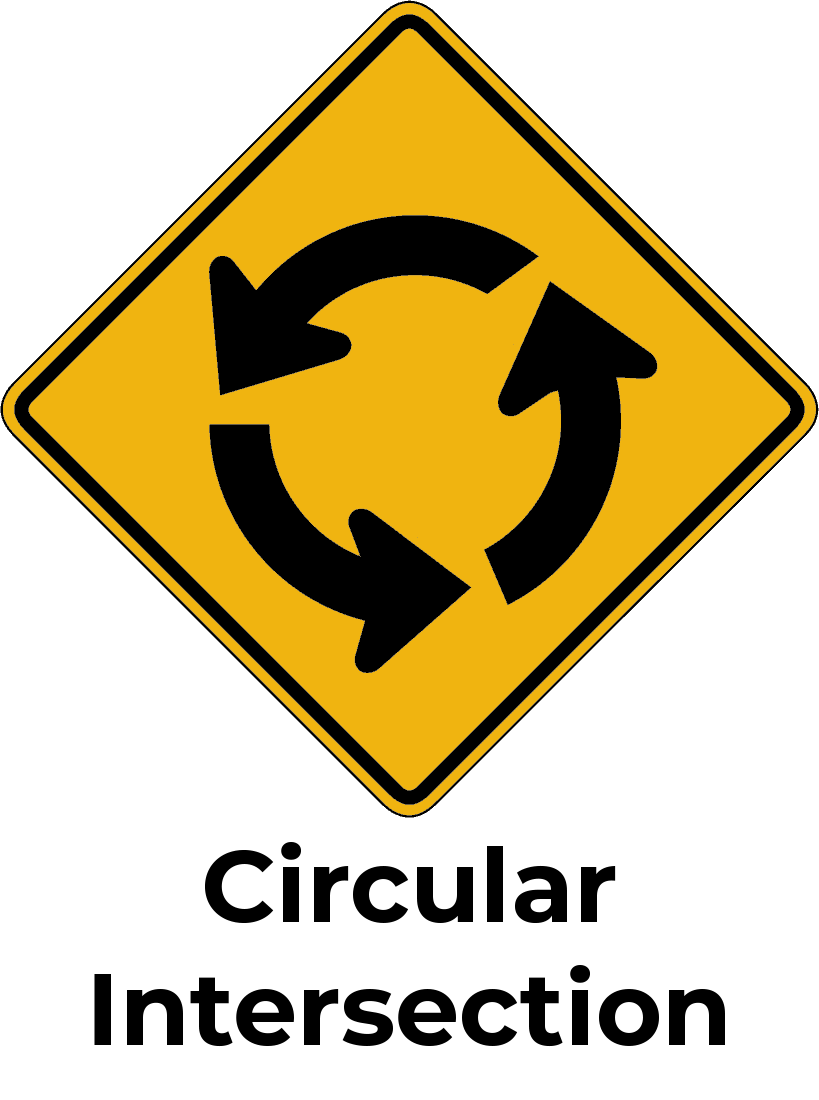
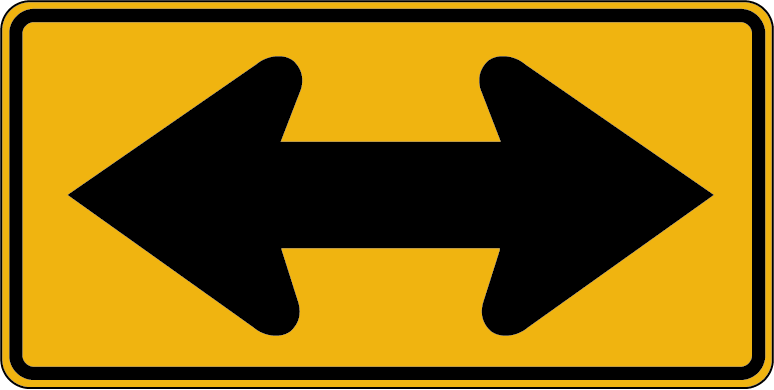
TWO DIRECTION LARGE ARROW. This sign is placed at the far side of a T-intersection to tell you that you can only go left or right. The road you are on does not continue straight through at the intersection.
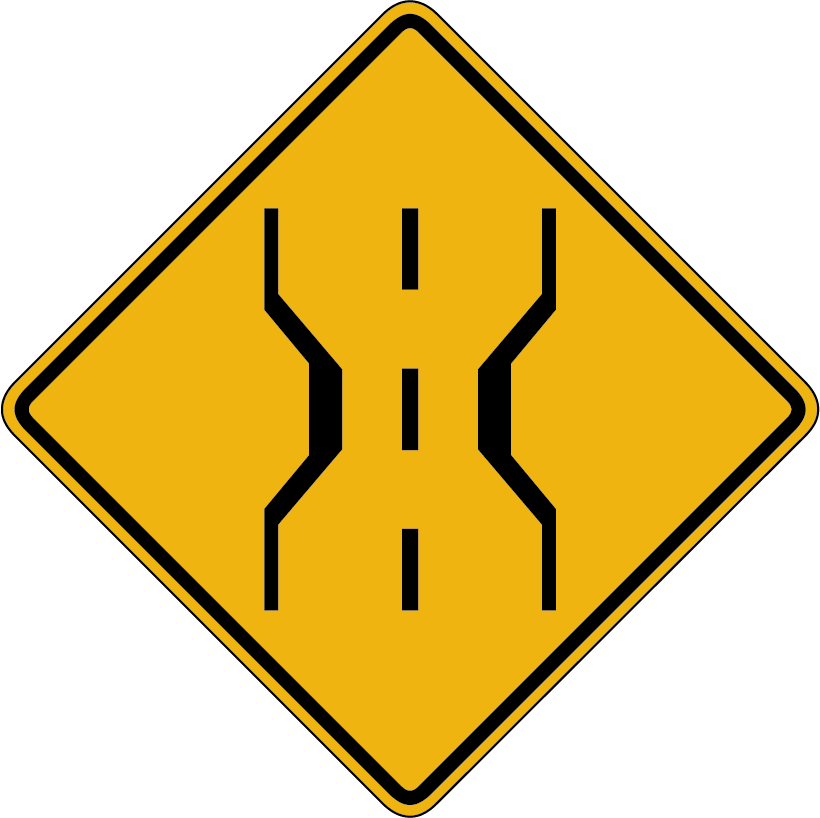
NARROW BRIDGE OR UNDERPASS AHEAD. Each lane on the bridge or underpass becomes narrower, and there generally is no shoulder. You need to slow down and make sure you stay in your lane. If a driver approaching from the opposite direction has a wide vehicle or is taking up part of your lane, wait until they clear the area.
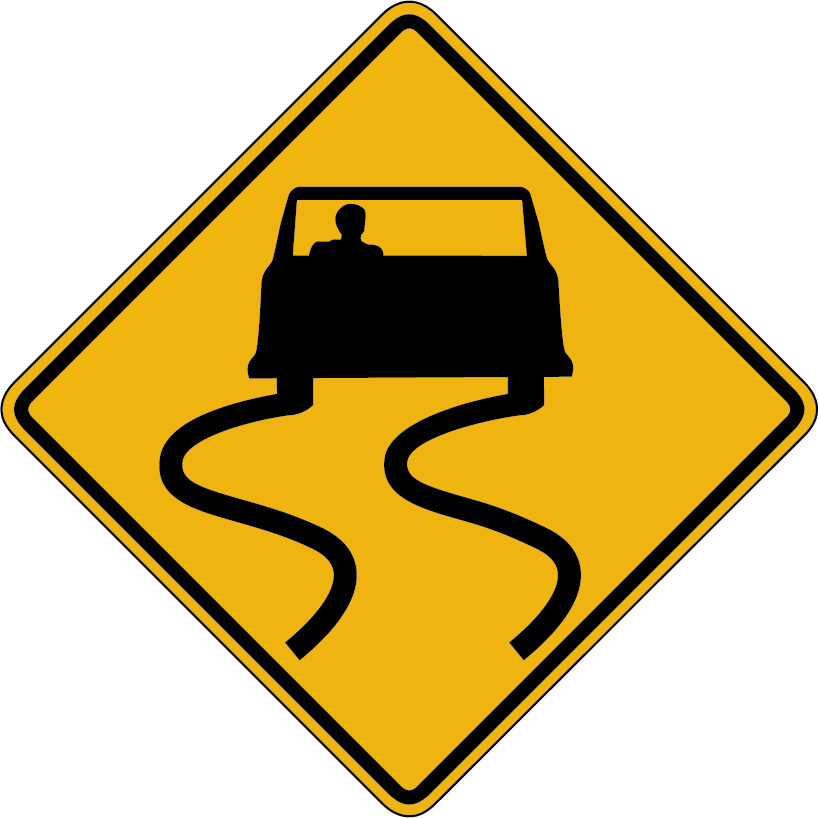
SLIPPERY WHEN WET. Especially slippery conditions exist when wet. In wet weather, reduce your speed and increase your following distance. Do not accelerate or brake quickly. Make turns at a very slow speed.
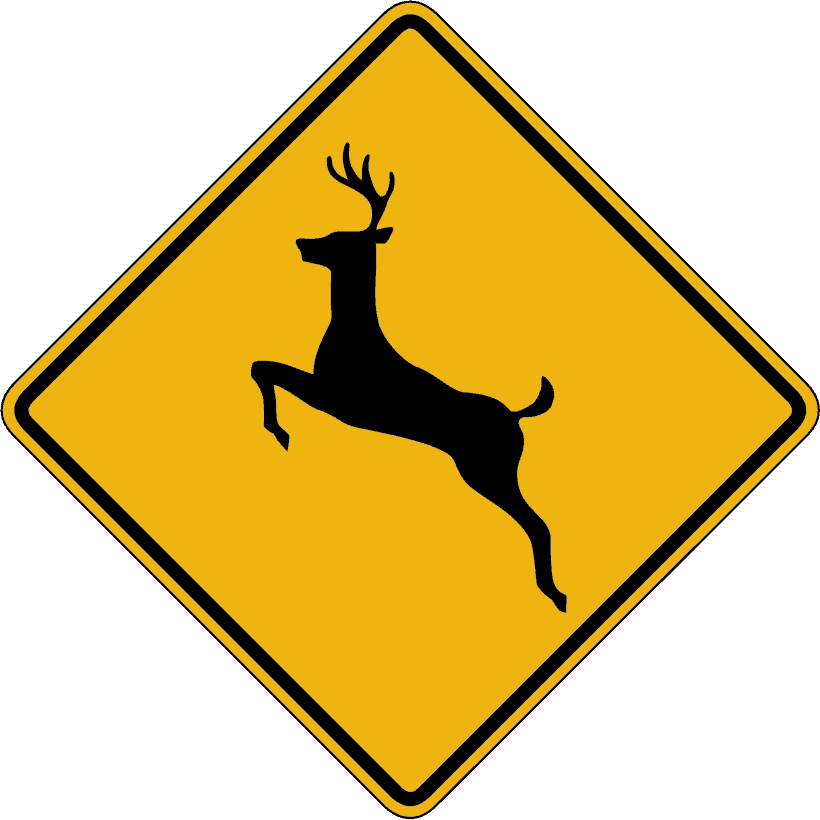
DEER CROSSING. This sign is posted in areas where deer frequently cross and crashes with deer have occurred.
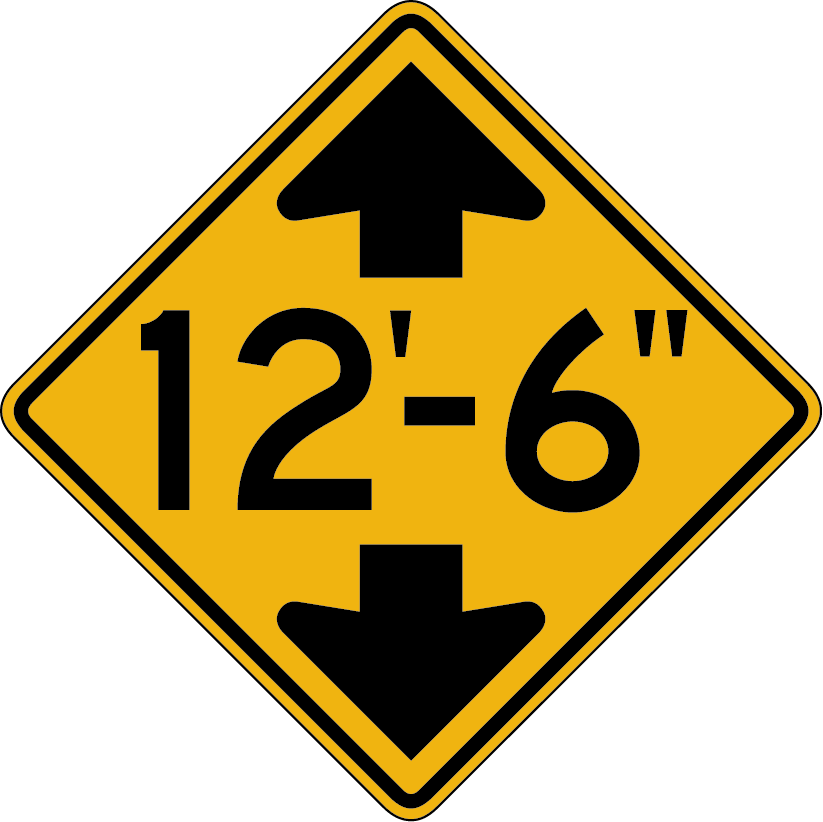
LOW CLEARANCE. This sign may be placed on an underpass, or at the entrance to a tunnel or parking garage. Do not enter if your vehicle is taller than the height listed on the sign.
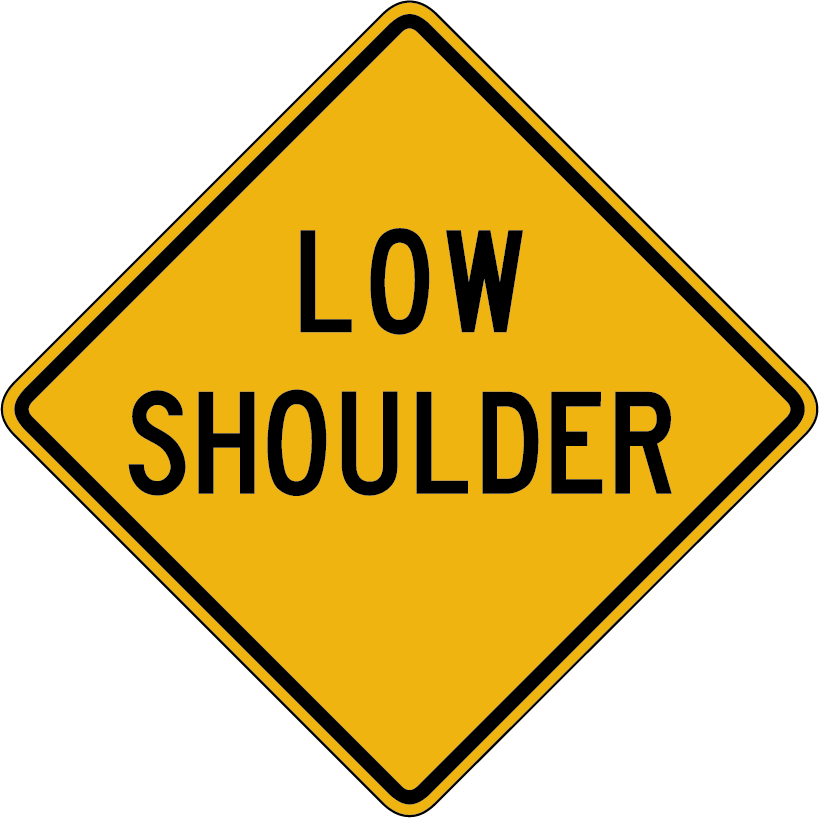
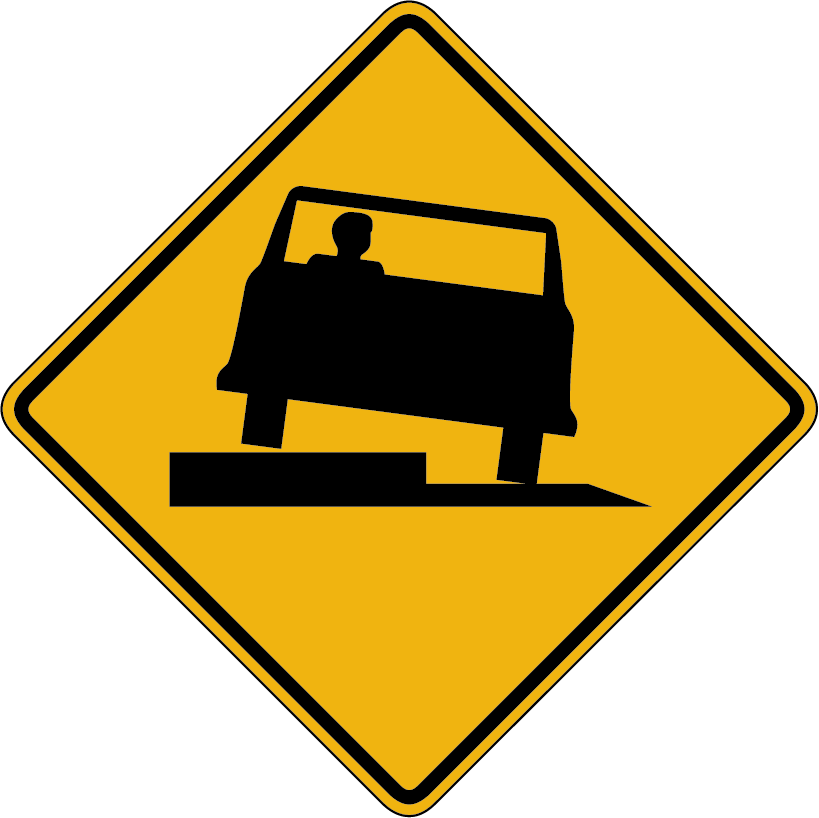
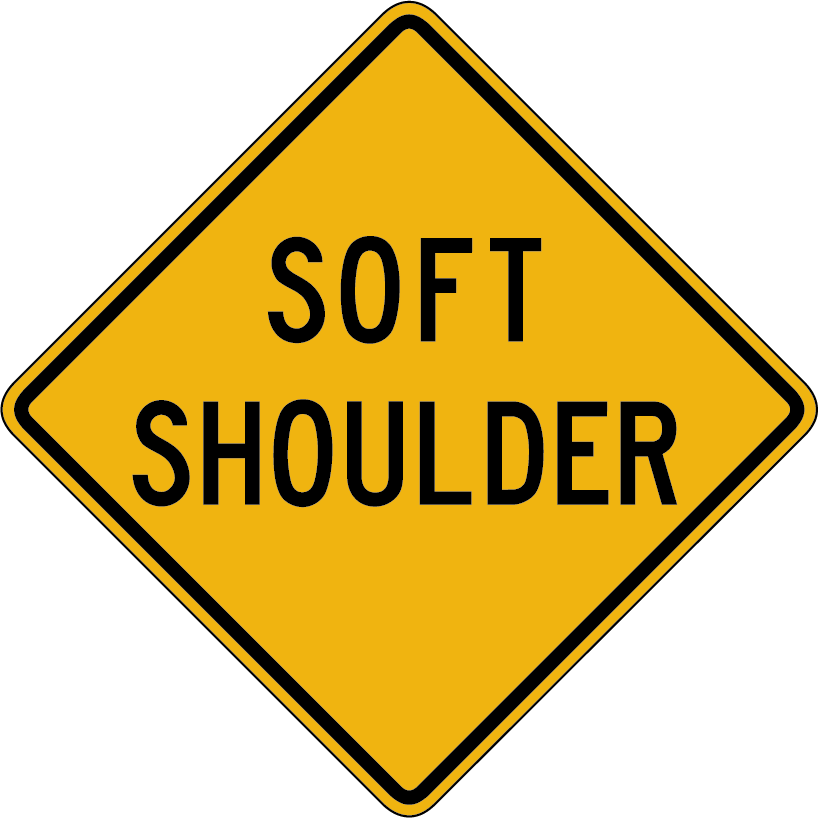
SHOULDER SIGNS. These signs are placed in advance of locations where the shoulder is lower than the road or the shoulder is soft (not paved). The
LOW SHOULDER sign is used where the shoulder is as much as 3 inches below the level of the road. The
SHOULDER DROP
OFF sign is used for even more severe drop-off situations.
If you stray off of the roadway and one wheel
drops off onto a low shoulder or a soft shoulder, do not slam on the brakes or steer sharply to try to get
back onto the roadway — you can easily lose control of your vehicle! Refer to
Chapter 3 for information about how to safely recover from drifting off of the pavement.
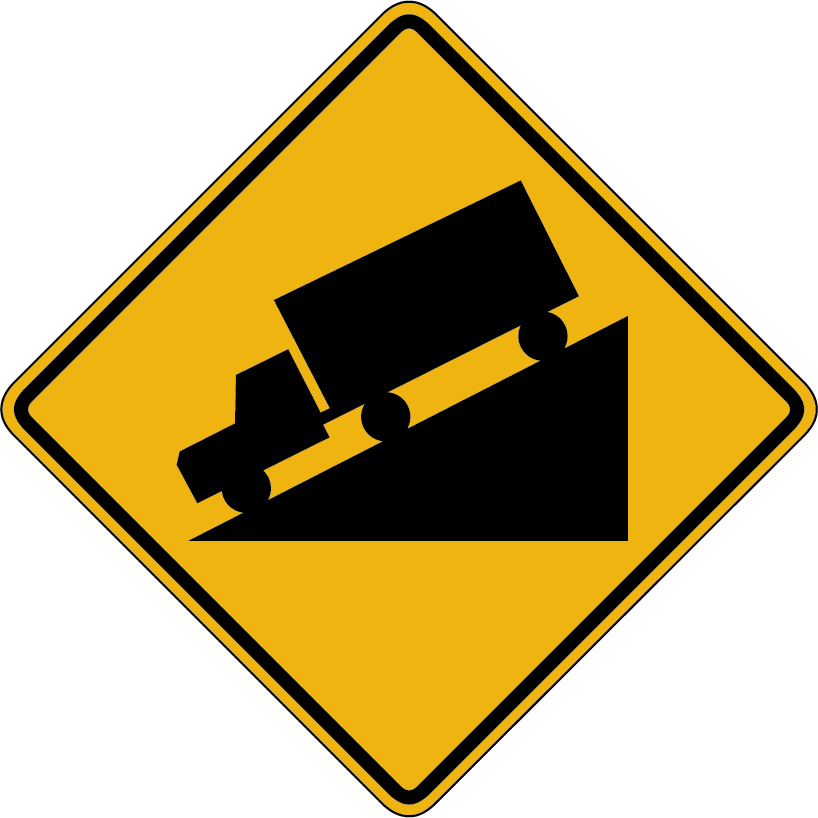
HILL/DOWNGRADE. There is a steep hill ahead. Slow down and be ready to shift to a lower gear to control your speed and to save wear and tear on your brakes.
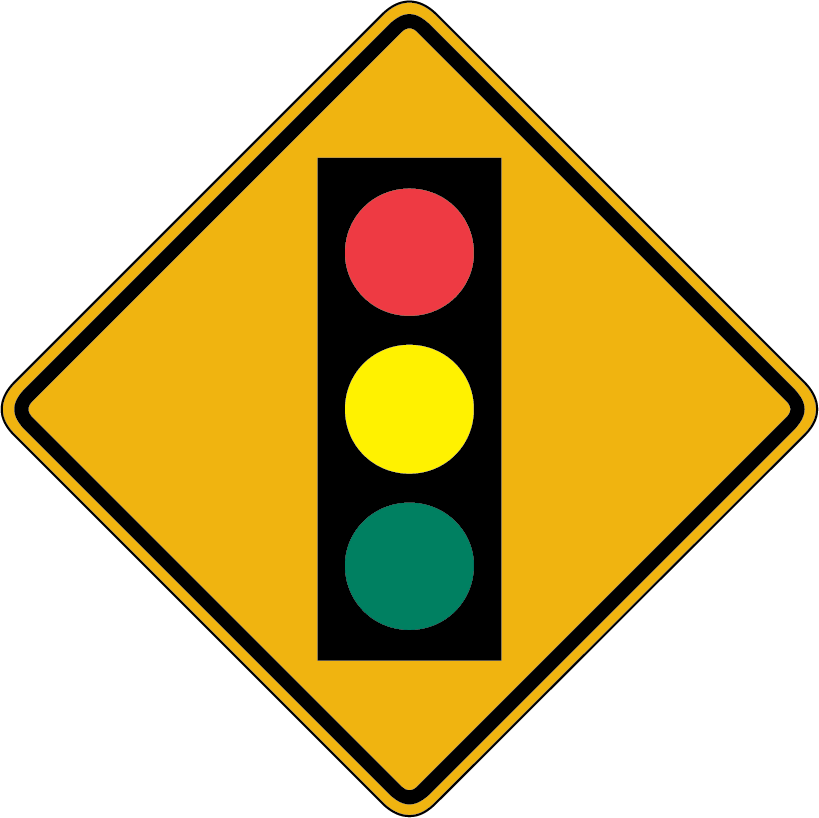
TRAFFIC SIGNAL AHEAD. A traffic signal is present at the intersection ahead. You may not be able to see it because of a curve or hill. If the light is red (or if the light has just turned green), a line of vehicles may be stopped ahead. When you see this sign, slow down and prepare to stop, if necessary.
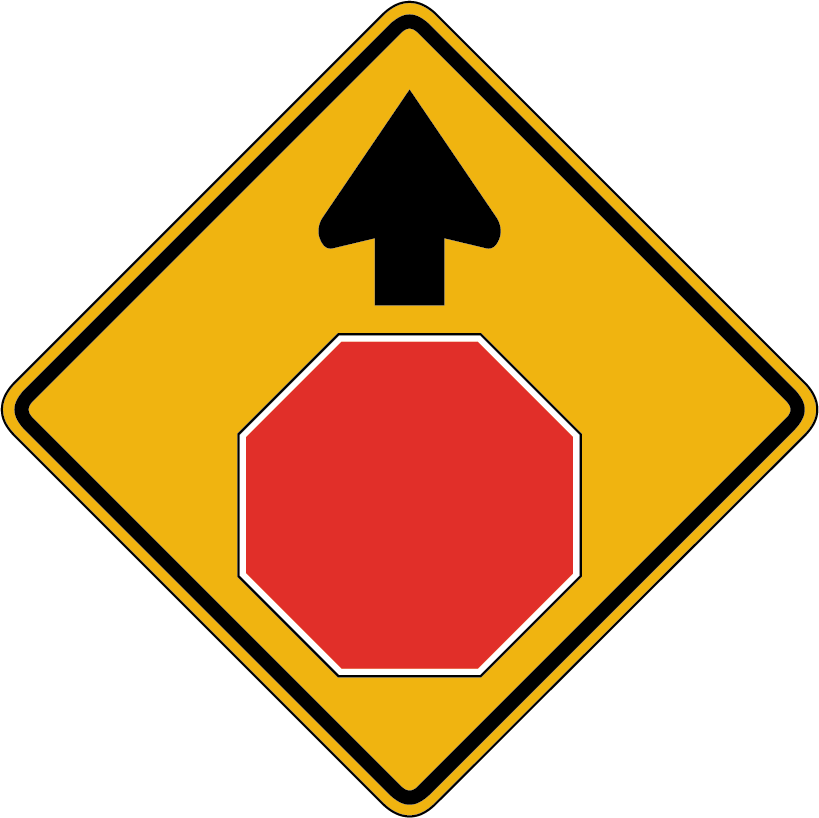
STOP SIGN AHEAD. A
STOP sign is present at the intersection ahead. You may not be able to see it because of a curve, hill, or something else blocking your view. There also may be a line of vehicles stopped ahead at the
STOP sign you cannot see. When you see this sign, slow down in preparation to stop.
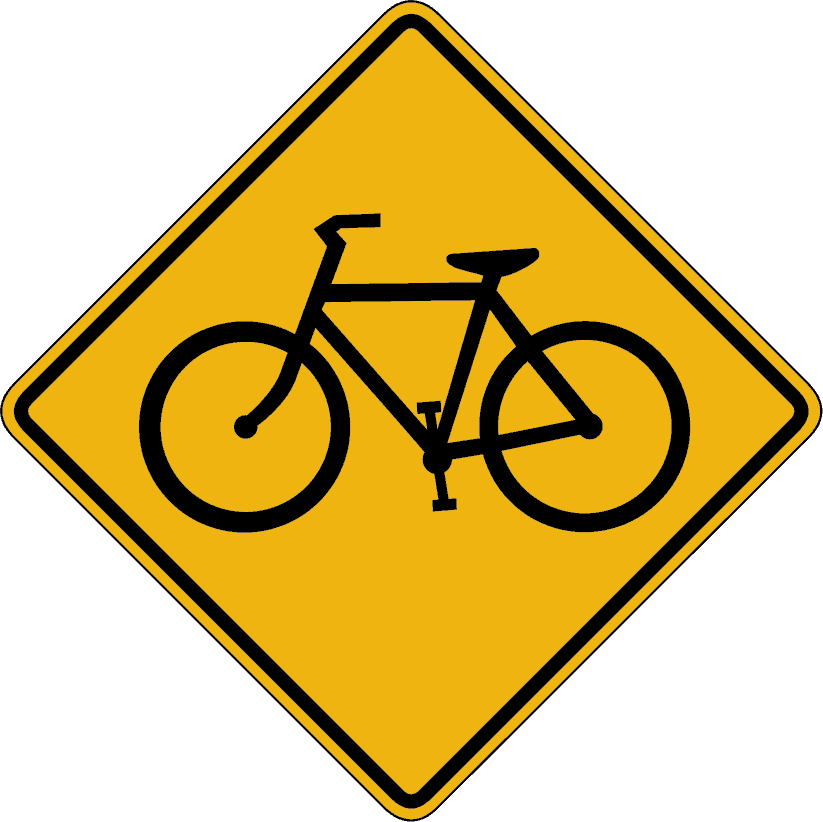
BICYCLE CROSSING AHEAD. Bicyclists may be crossing your path ahead. Be prepared to slow down, if necessary. This sign may have either a yellow background (as shown) or a fluorescent yellow-green background.
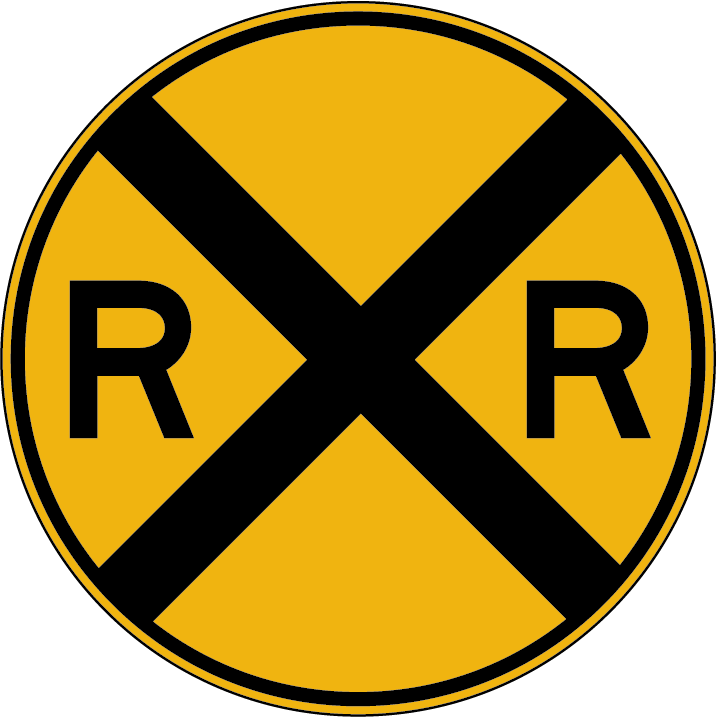
RAILROAD CROSSING AHEAD. You are approaching a railroad crossing. When you see this sign, begin looking and listening for a train. This sign is placed far enough in advance to allow you to stop before you reach the tracks, if necessary. Refer to
Chapter 3 for more information about railroad crossing safety.
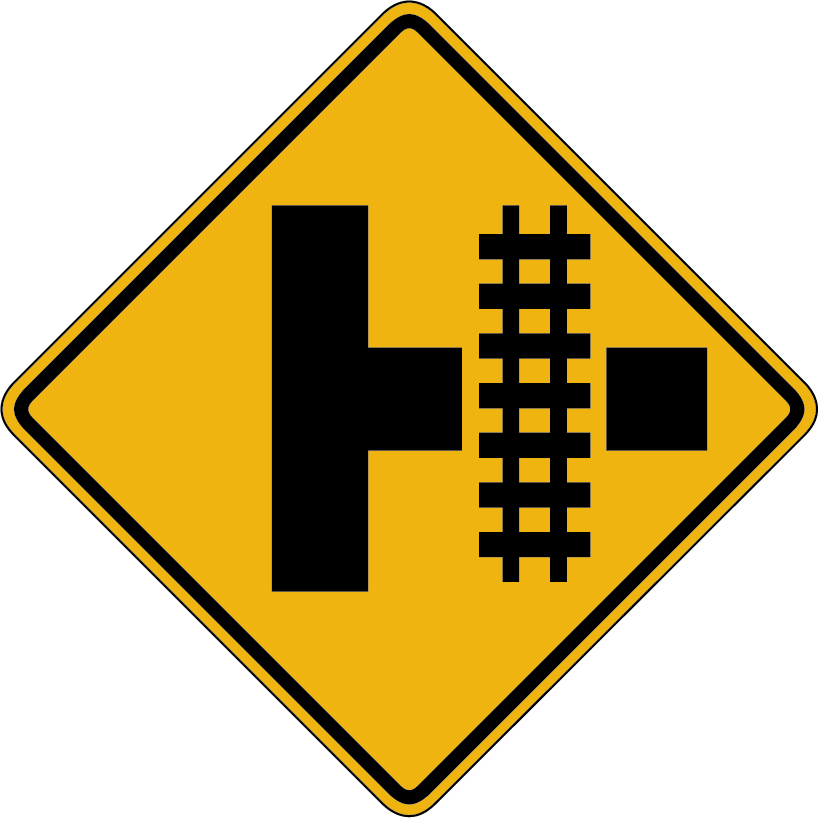
ADVANCED INTERSECTION/RAILROAD CROSSING SIGN. The intersecting road has a railroad crossing within a very short distance from the intersection. If you are planning to turn onto the intersecting road and if a train is approaching, be prepared to stop.
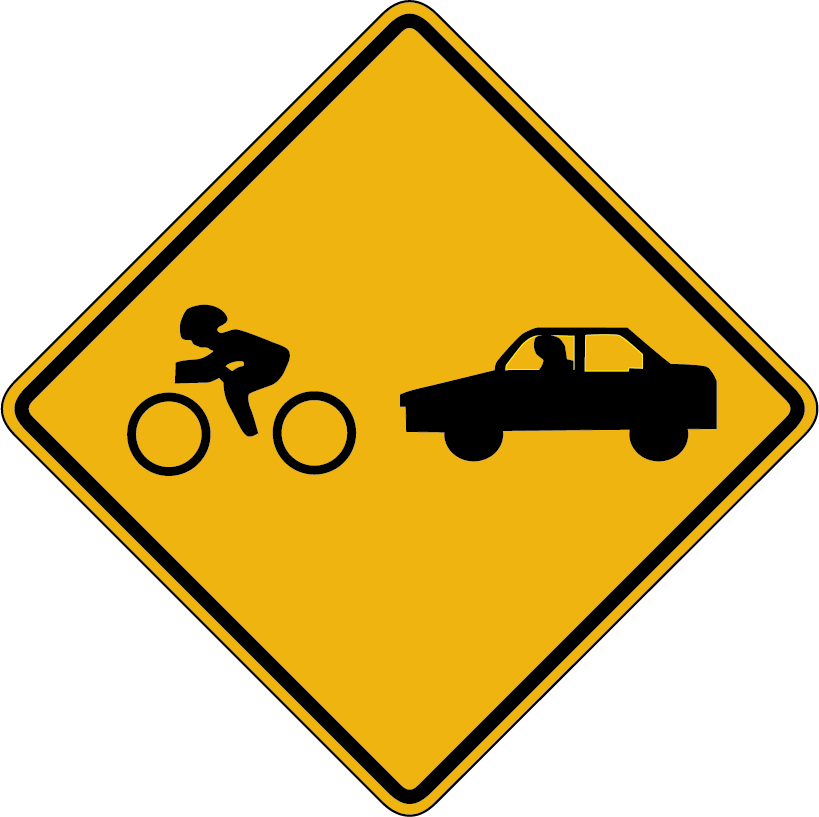
BICYCLE/MOTOR VEHICLE SHARE THE ROAD. Used at roadway pinch points (no shoulder, narrow lanes, etc.) to warn you, as a motorist, to provide adequate space for bicyclists to share the roadway.
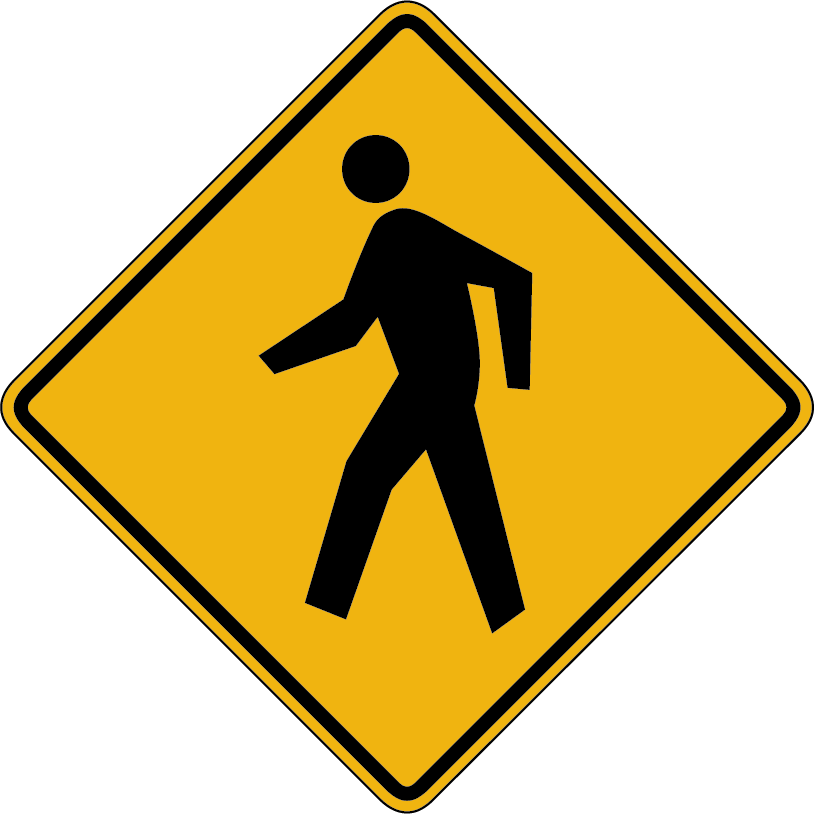
PEDESTRIAN CROSSING. Used at a marked crosswalk or in advance of locations where pedestrians may be crossing your path. Be prepared to slow down or stop, if necessary. This sign may have either a yellow background (as shown) or a fluorescent yellow-green background.
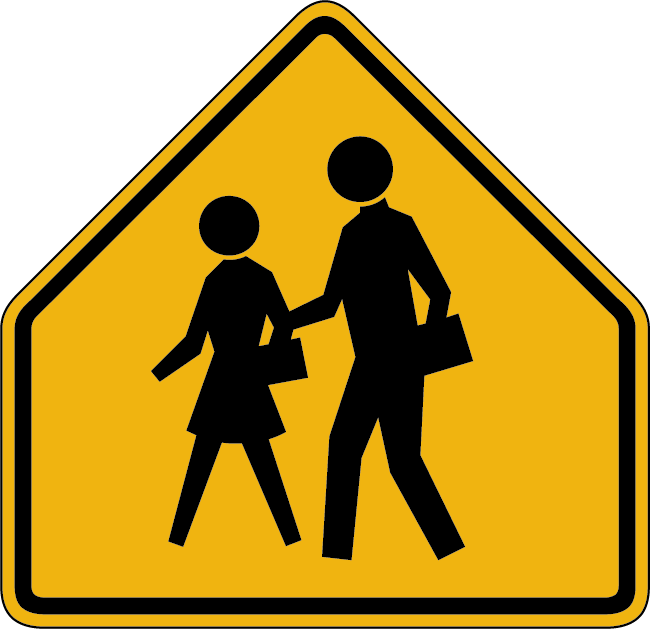
SCHOOL. This is the only pentagon-shaped sign used on the roadway. It means you are approaching a school zone. If the sign is accompanied by a downward-pointing arrow, it means you are at the school zone crosswalk. You should slow down, watch for children crossing the road and stop, if necessary. This sign may have either a yellow background (as shown) or a fluorescent yellow-green background.
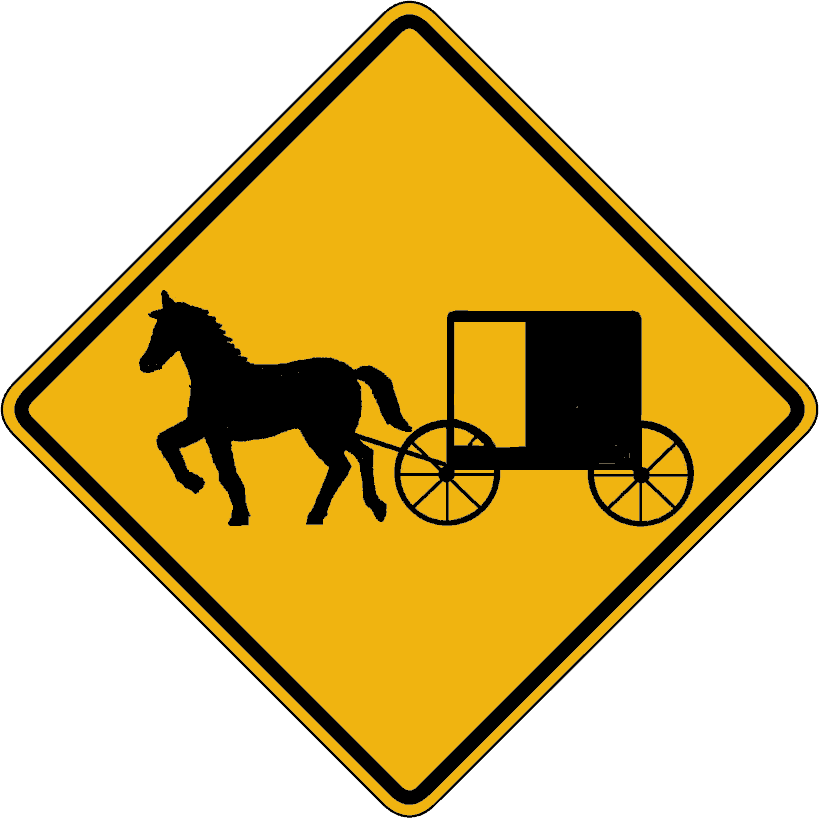
HORSE-DRAWN VEHICLE. This sign is posted in areas where slow-moving, horse-drawn vehicles cross or share the roadway with motorized vehicles.
OBJECTS ADJACENT TO THE ROADWAY. Objects close to the edge of the road sometimes need a marker to warn drivers of the potential danger. These include underpass supports, ends of bridges, guiderails, and other structures. In some cases, there may not be a physical object involved, but rather a roadside condition such as a drop-off or an abrupt change in the roadway alignment. Such roadside objects and conditions are indicated by the following markers, where the stripes are angled down in the direction you need to move to avoid the hazard:
Work Zone Signs (Work Area and Construction Zone Signs)
Did You Know?
Highway workers have forms to report motorists who speed or drive unsafely in work zones to the police, who may then issue a ticket, resulting in fines and points.
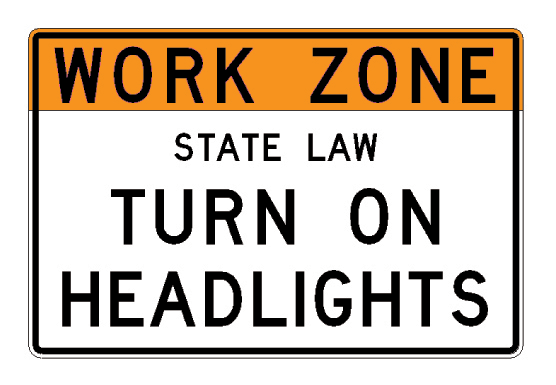
Work zone signs are normally diamond-shaped, like warning signs, but they are orange with black lettering instead of yellow with black lettering. These signs identify maintenance, construction, or utility areas where workers or equipment may be on or near the roadway. Stay alert and slow down when you see these signs.
Turn on your headlights when traveling through a work zone, no matter what time of day. This is the law for all posted work zones, not just for active ones. Using your headlights makes your vehicle more visible to other traffic as well as to highway workers. If you are pulled over by police for a traffic violation in a work zone and your vehicle's headlights are not turned on, you will be fined an additional $25.

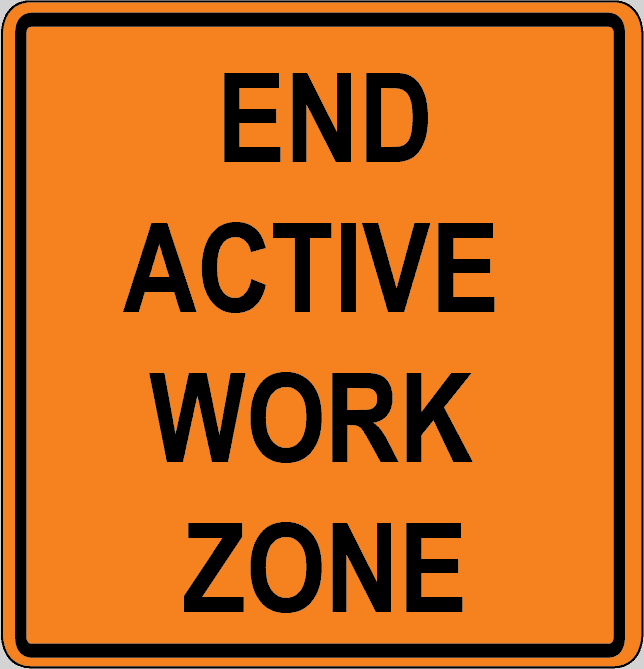
These
WORK ZONE signs are placed at the beginning and end of an active work zone. An active work zone is the portion of a work zone where construction, maintenance, or utility workers are on the roadway, or on the shoulder of the highway next to an open travel lane.
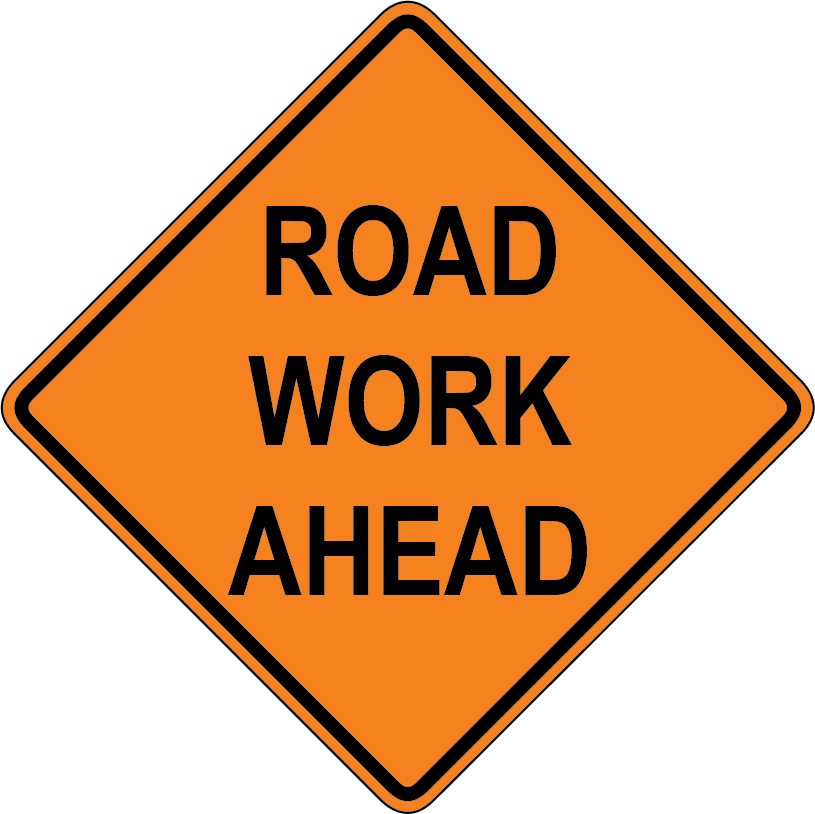
ROAD WORK AHEAD. This sign informs you there is road work ahead and also cautions you to slow down.
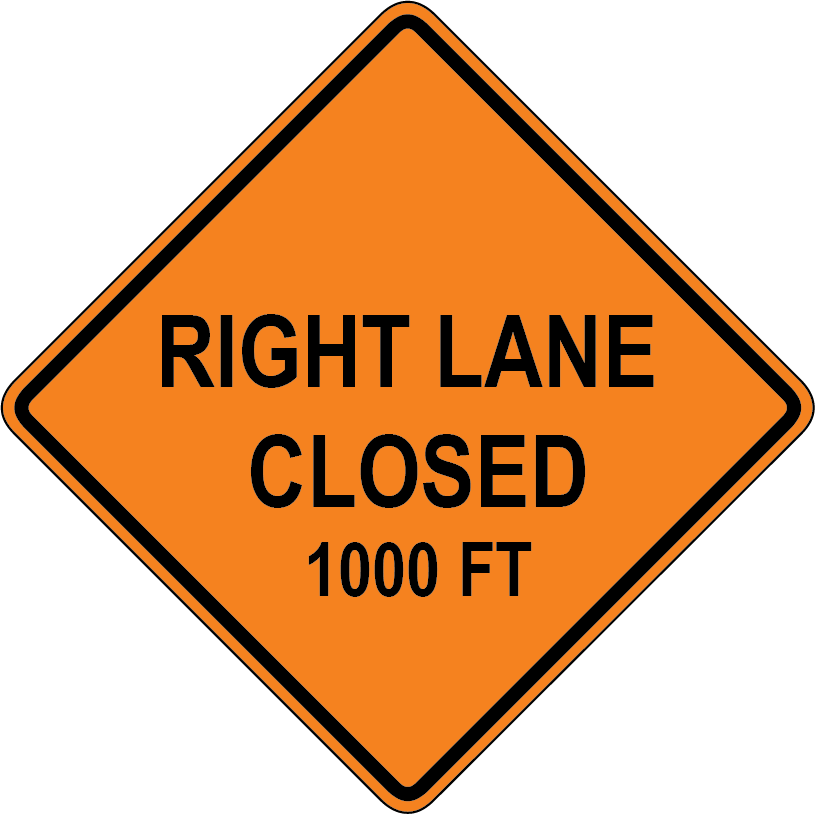
LANE CLOSED AHEAD. This sign tells you a particular lane will be closed at a specified distance ahead.
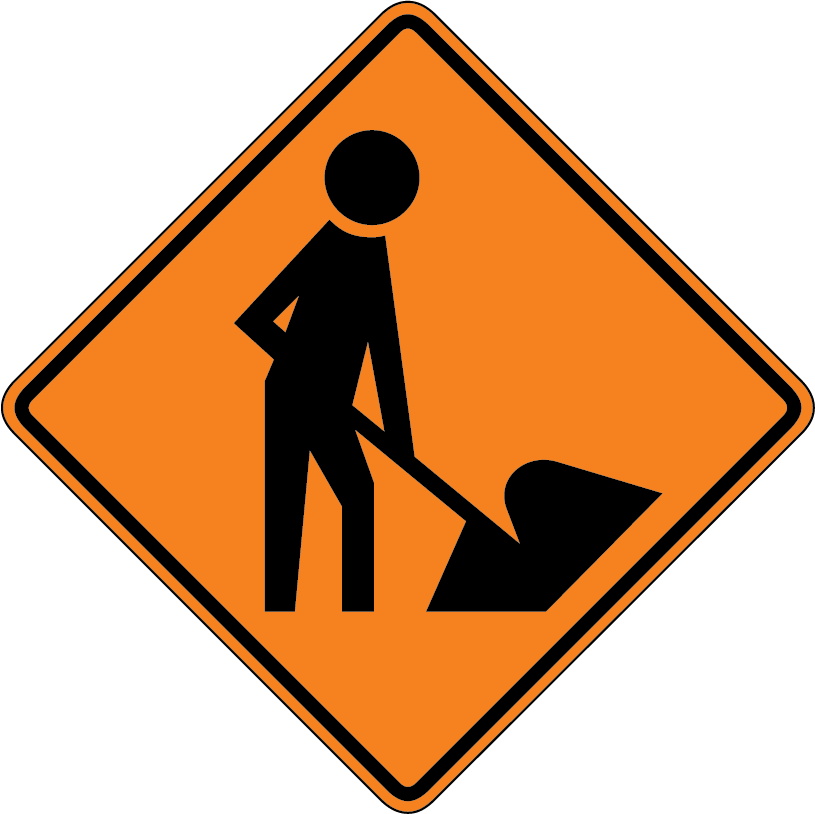
WORKERS AHEAD. Workers may be on or are very close to the roadway, so take special care when traveling through the area.
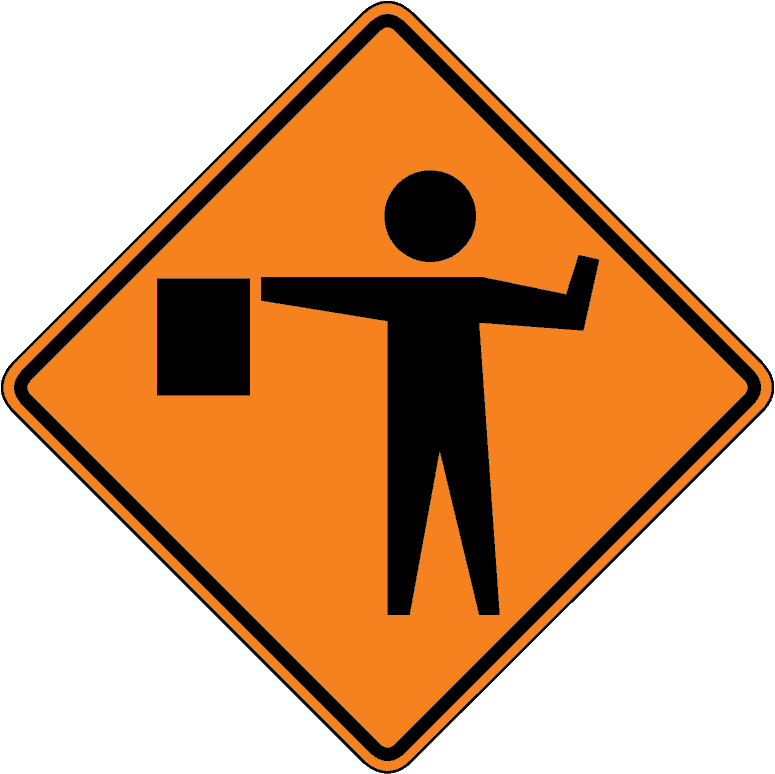
FLAGGER AHEAD (ROAD
CONSTRUCTION AHEAD). The sign to the left shows a flagger is controlling traffic ahead. As shown below, flaggers use
STOP and
SLOW paddles or a red flag to signal you to stop or slow down. Pay special attention to flaggers when approaching and traveling through a work zone.
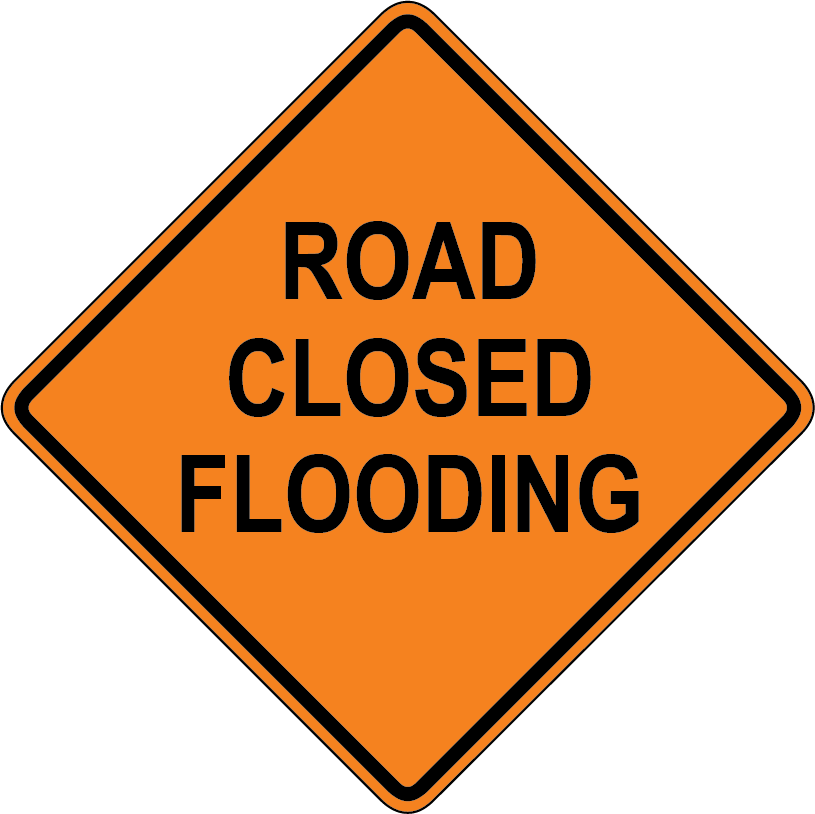
ROAD CLOSED FLOODING. This sign informs you that the road ahead is closed due to flooding. You must use an alternate route. Refer to
Chapter 3 about what to do if you encounter a flooded roadway.
ELECTRIC ARROW PANELS. Large electronic flashing arrow panels (move/merge right or left) placed in the roadway or mounted on vehicles advise approaching motorists of lane closures. Begin your merge well in advance of the sign. An arrow panel displaying either of the messages shown in the figure to the far right (caution) indicates there is a work area ahead next to the travel lane. Drive with extra caution.

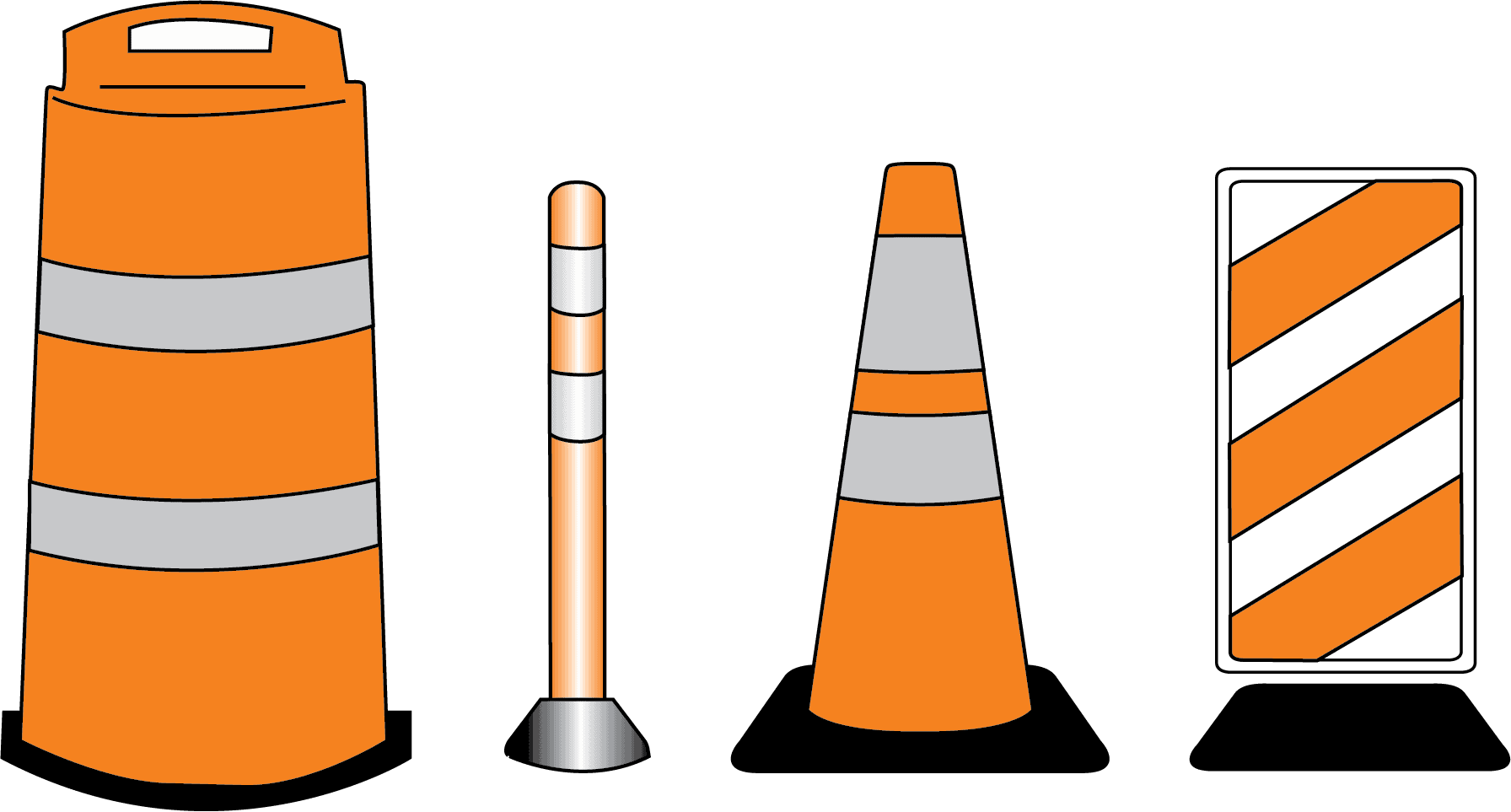
CHANNELING DEVICES. Barrels, tubes, cones, and vertical panels are all devices used in work zones to guide you through changing traffic patterns and keep you away from hazards associated with road work.
Guide Signs
Guide signs provide information about intersecting roads, help direct you to cities and towns, and show points of interest along the highway. Guide signs also help you find hospitals, service stations, restaurants, and motels. Usually these signs are horizontal rectangles.
HIGHWAY/EXPRESSWAY GUIDE SIGNS. The following three signs are examples of highway and expressway guide signs. They are green with white letters. Most highway and expressway signs are posted the same way. For example, there is usually one advance sign, which is followed by another advance sign. The third sign then is posted at the exit. Several signs are necessary because the high speed and heavy traffic on highways can cause drivers to miss seeing a single sign. Also, motorists may need to make one or more lane changes to exit.

EXIT NUMBERS. Exit numbers correspond with the mile markers. This change allows motorists to quickly calculate distances between exits, e.g., the distance between Exit 95 and Exit 20 is 75 miles.
If a yellow panel with the message EXIT ONLY is on a highway sign, the lane below the sign will not continue through the interchange; instead, the lane will go off of the road to form a ramp. If you are in a lane posted with an
EXIT ONLY, you may change lanes, or you must exit the highway if you stay in this lane.
Here are some tips to let you know which side of the highway you will exit:
- The small green
EXIT number sign on top of the green rectangular sign will be on the left side of the sign, if the exit is on the left side of the highway.
- The small green
EXIT number sign on top of the green rectangular sign will be on the right side of the sign, if the exit is on the right side of the highway.
- If the sign has white arrows, the arrow will point in the direction of the exit.
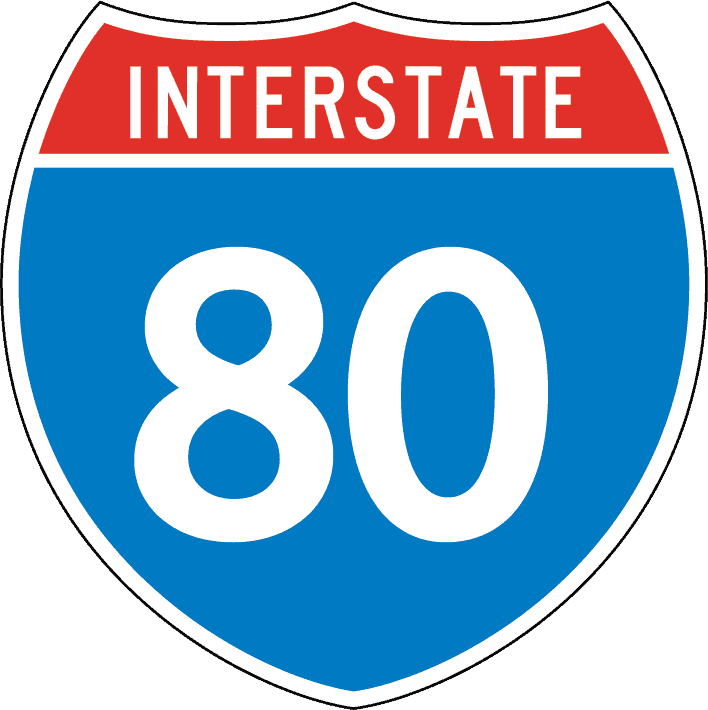
INTERSTATE NUMBERING SYSTEM. The red, white, and blue shield sign indicates a highway is an interstate. These interstates are specially numbered to help motorists find their way through unfamiliar areas. A code is used to show if the route travels mainly east and west or north and south, and to show if the route is in the eastern, middle, or western United States.
Decoding the Interstate Numbering System. The numbers on the interstate shield can be a great navigational aid when you understand how they are developed. They generally follow this pattern:
• One or two-digit,
even-numbered interstates are generally east-west routes. Nationally, the numbers increase from I-10 in the south to I-94 in the north. In Pennsylvania, I-76 is in the southern part of the state, and I-84 and I-80 are in the northern part.
• One or two-digit,
odd-numbered interstates are generally north-south routes. Numbers increase from the west coast I-5 to the east coast I-95. In Pennsylvania, I-79 is in the western part of the state, and I-95 is in the eastern part.
• Three-digit numbered interstate highways connect to other major highways. If the first of the three digits is an
even number, the highway usually connects to interstate highways at both ends, such as I-276 in Philadelphia. Many times such routes are known as "loops" or "beltways."
• When the first of the three digits is an
odd number, the highway is usually a "spur" route connecting with another interstate at only one end, sometimes going into a city center such as I-180 in Williamsport.
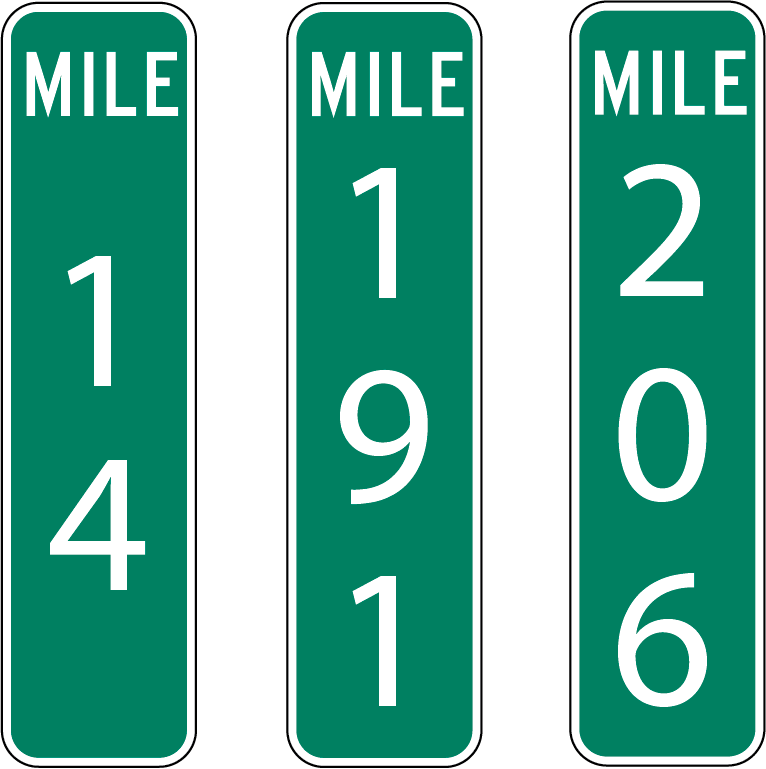
MILE MARKERS. Mile markers are used on some highways to indicate the number of miles from the point where the traffic route entered the state or from its beginning, if it does not extend to the state borders. The numbers start at zero in the western part of the state for east-west roadways and in the southern part of the state for north-south roadways. The numbers increase as you travel east or north and decrease as you travel west or south. For example, when you enter Pennsylvania from the west on Interstate I-80, the mile markers begin at Mile 1 and increase as you travel east. Knowing how to read mile markers can help you to know exactly where you are and give an approximate location, if you have to call for roadside assistance.
ROUTE MARKERS.
The following signs indicate the route on which you are traveling.

The route marker shows you the road is U.S. Traffic Route 22.
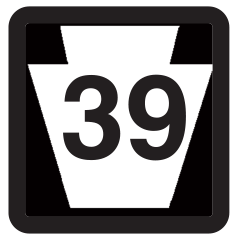
The keystone marker shows you the road is Pennsylvania Traffic Route 39.
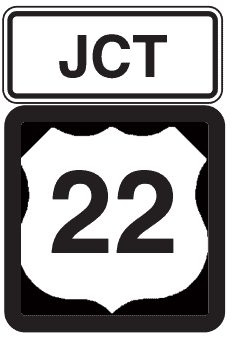
The junction plate on this route marker shows you are approaching the intersection of U.S. Traffic Route 22.
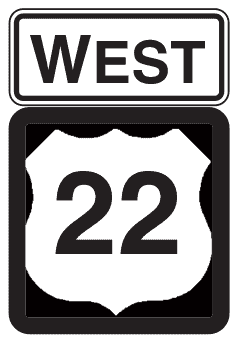
The direction plate on this route marker shows you are traveling west on U.S. Traffic Route 22.
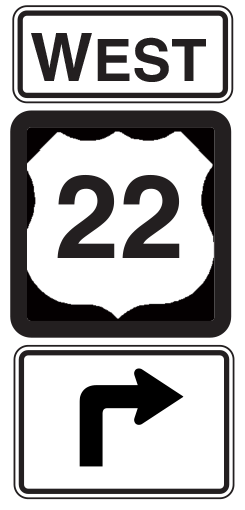
The supplemental arrow on this route marker assembly means you are approaching a right turn to continue on U.S. Traffic Route 22 West.
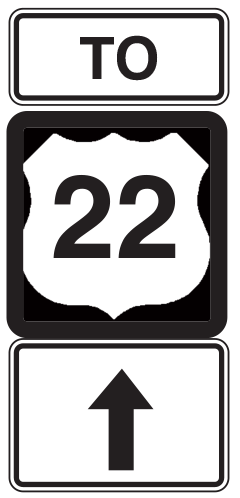
The route marker sign and "TO" trailblazer sign and the supplemental arrow means if you want to gain access to U.S. Traffic Route 22, you must continue ahead.
SERVICE SIGNS. The following signs are examples of service signs. The signs are square or rectangular, are blue with white letters or symbols, and show the location of various services located at the next exit.

TOURIST-ORIENTED DIRECTIONAL SIGNS. These signs are square or rectangular and may be blue or brown with white lettering. The signs direct motorists to tourist attractions such as museums, historical landmarks, or state or national parks.
